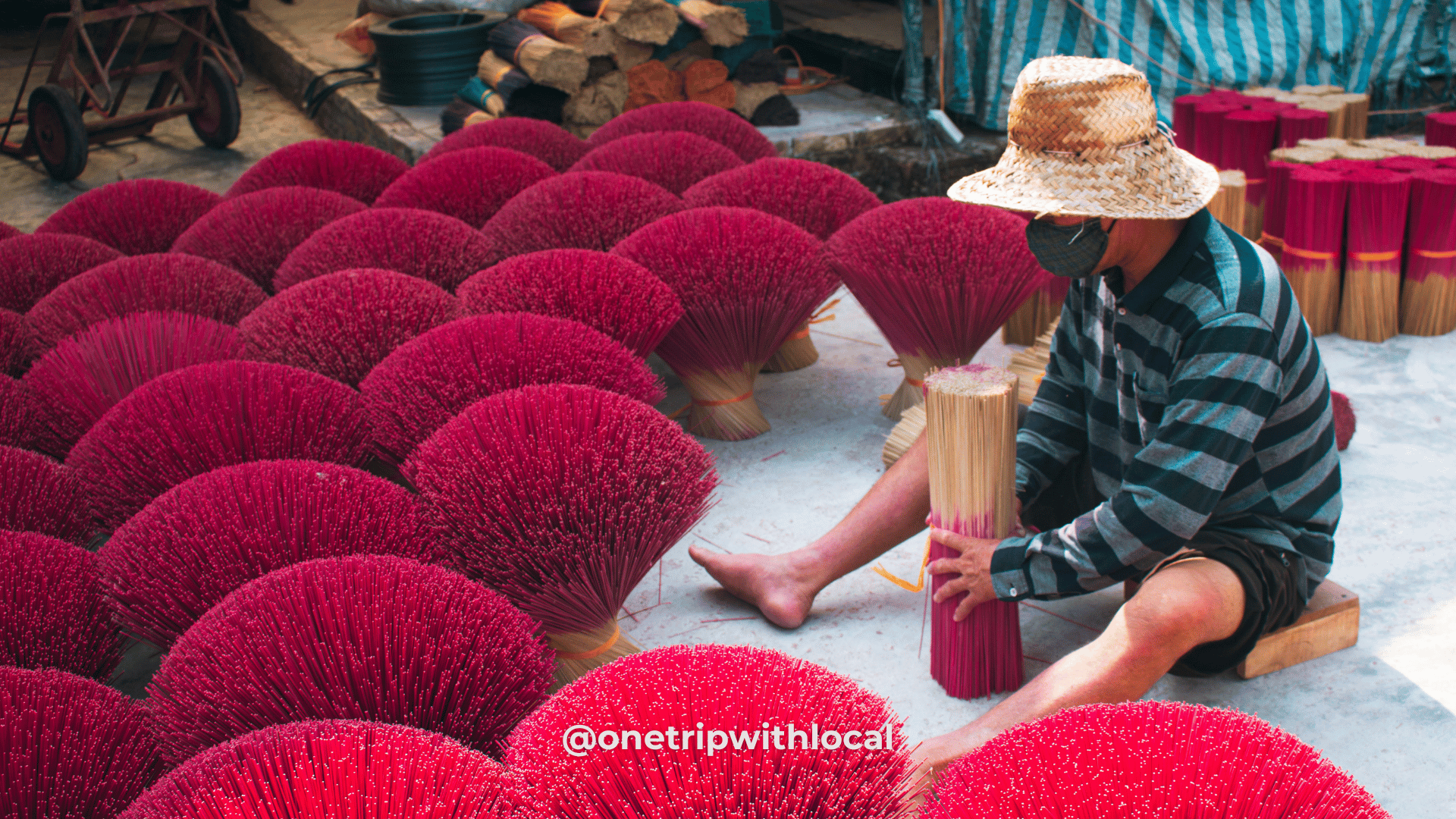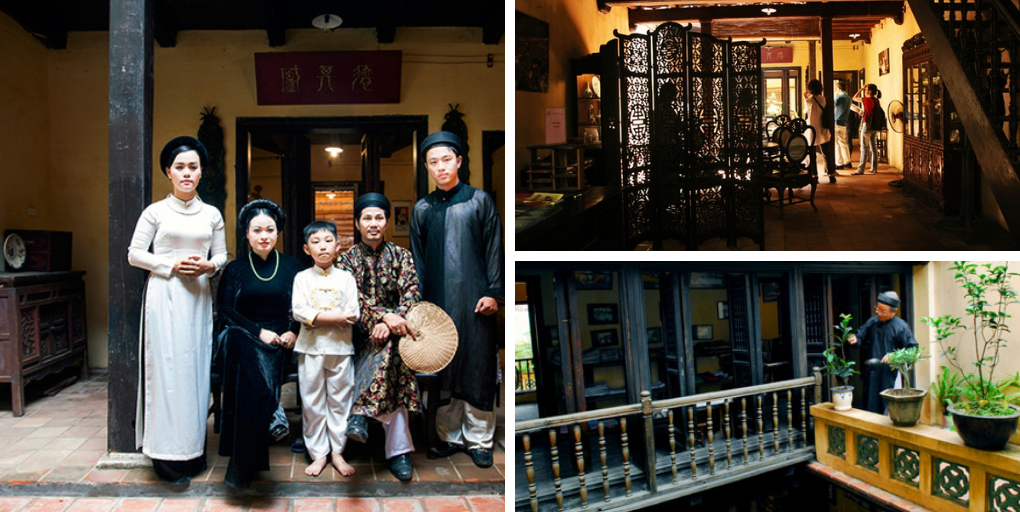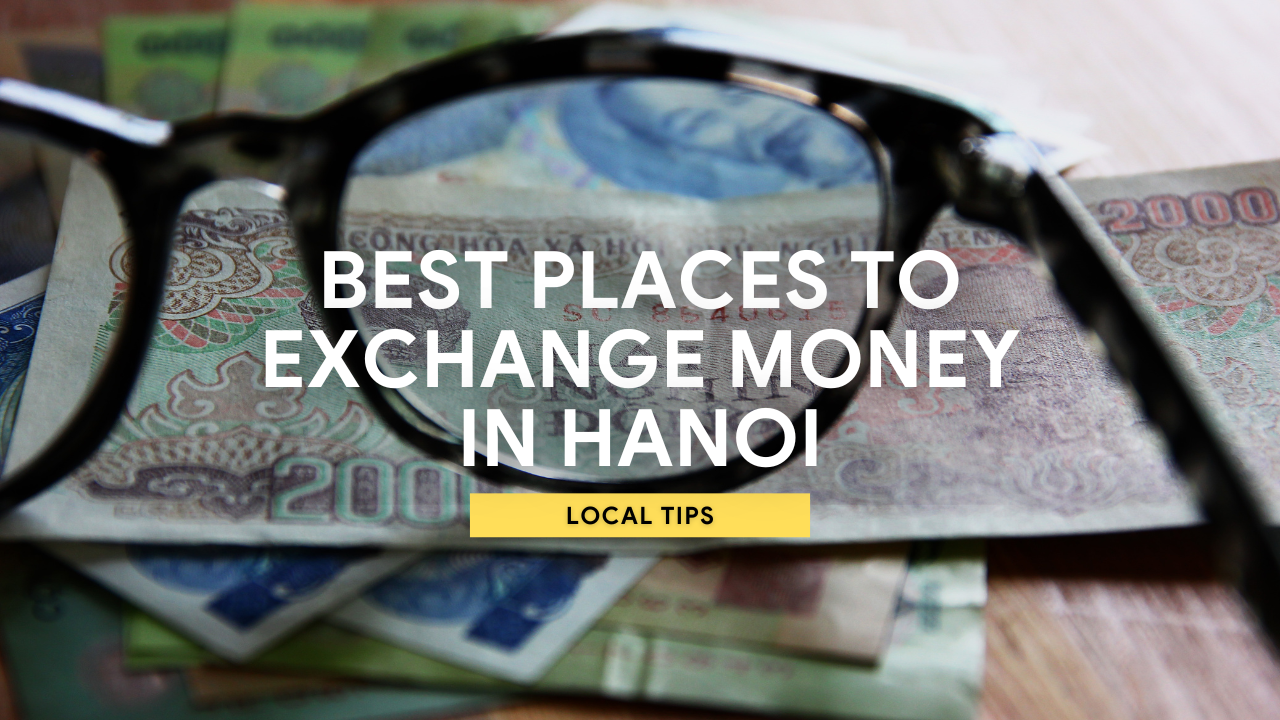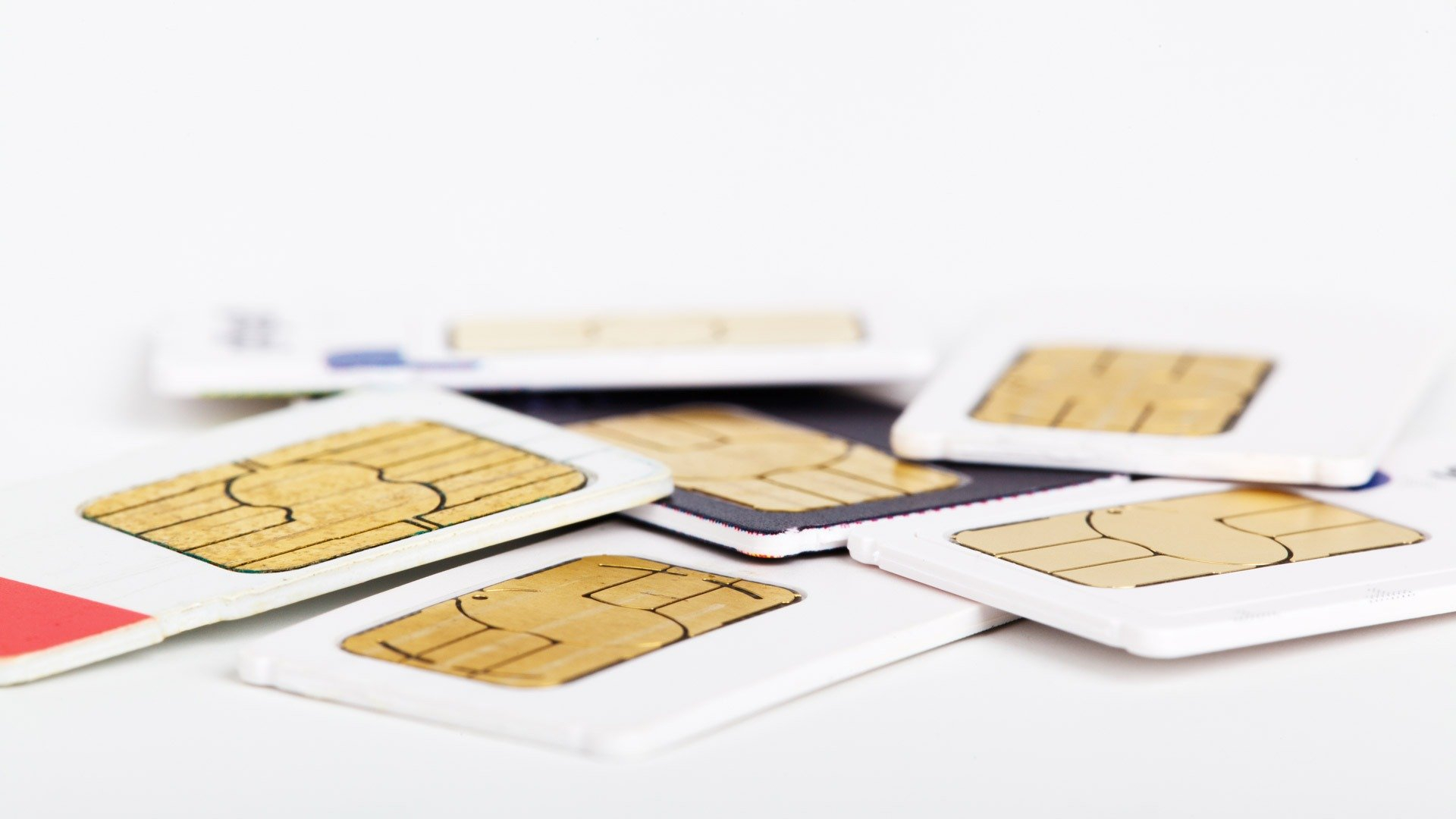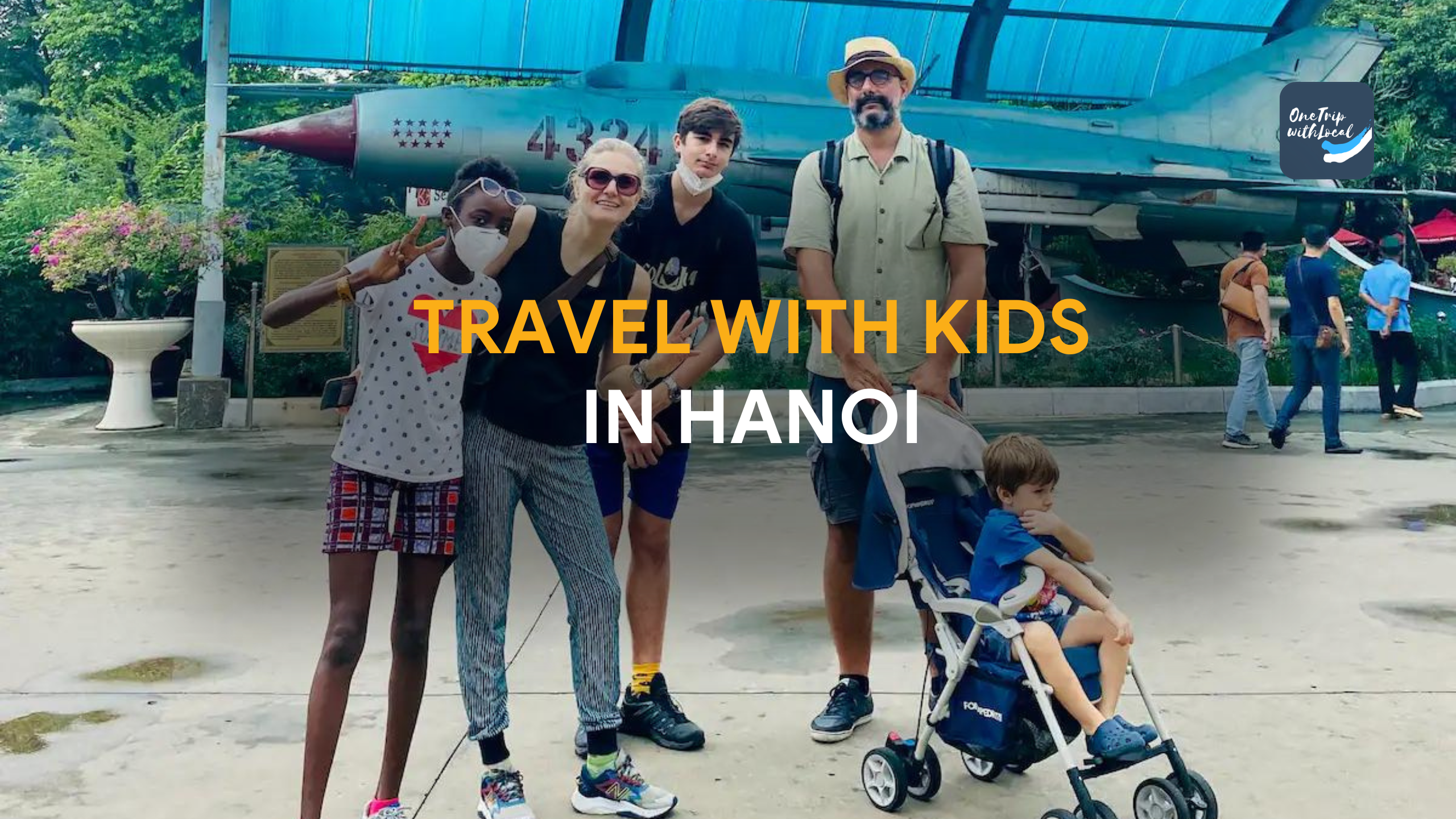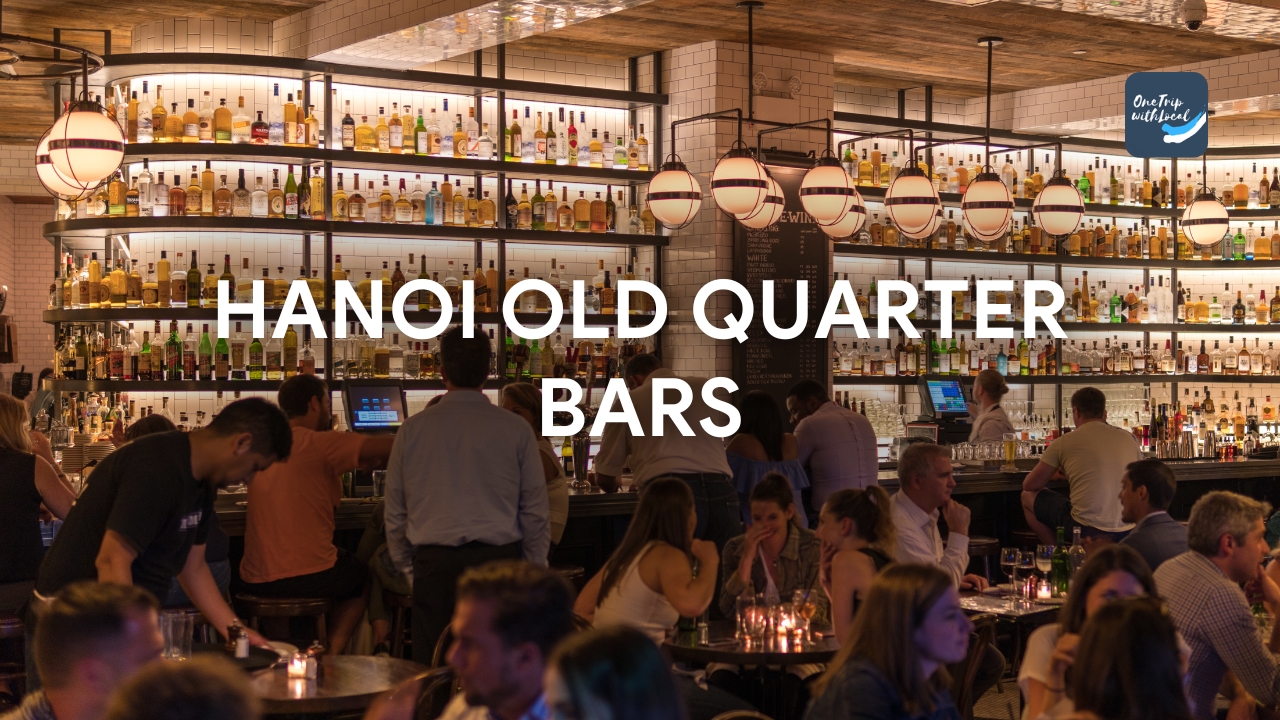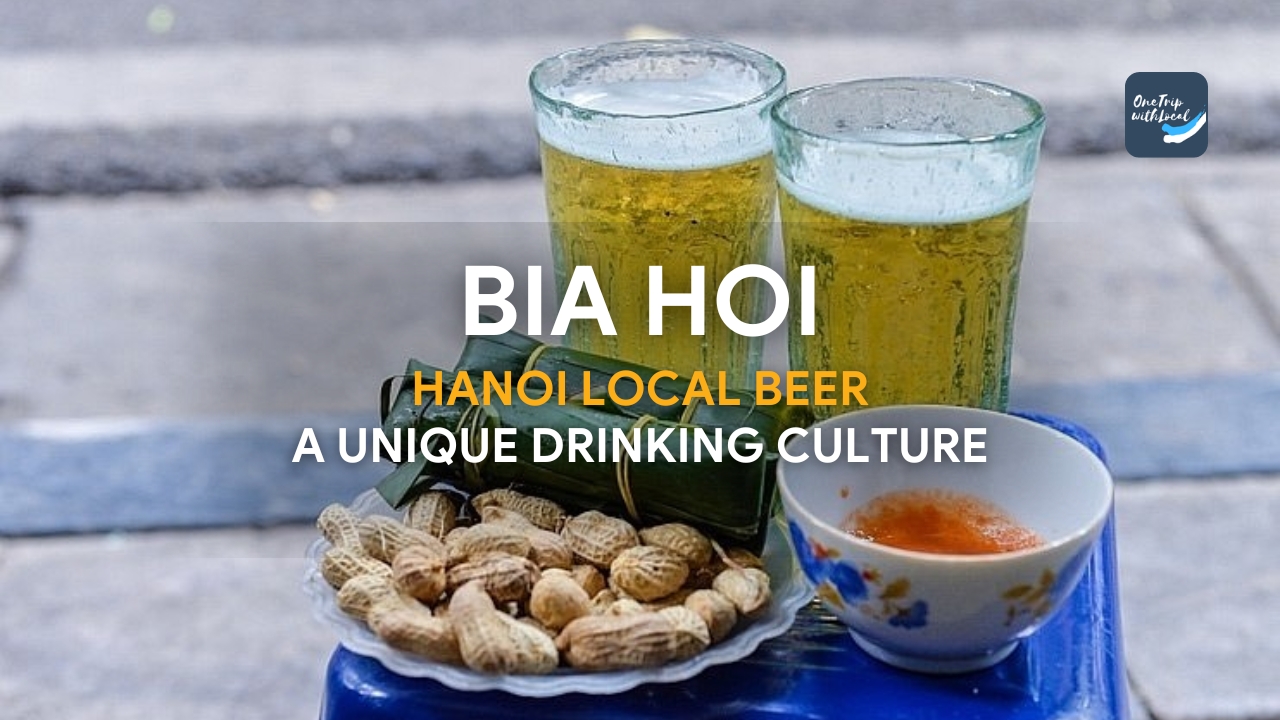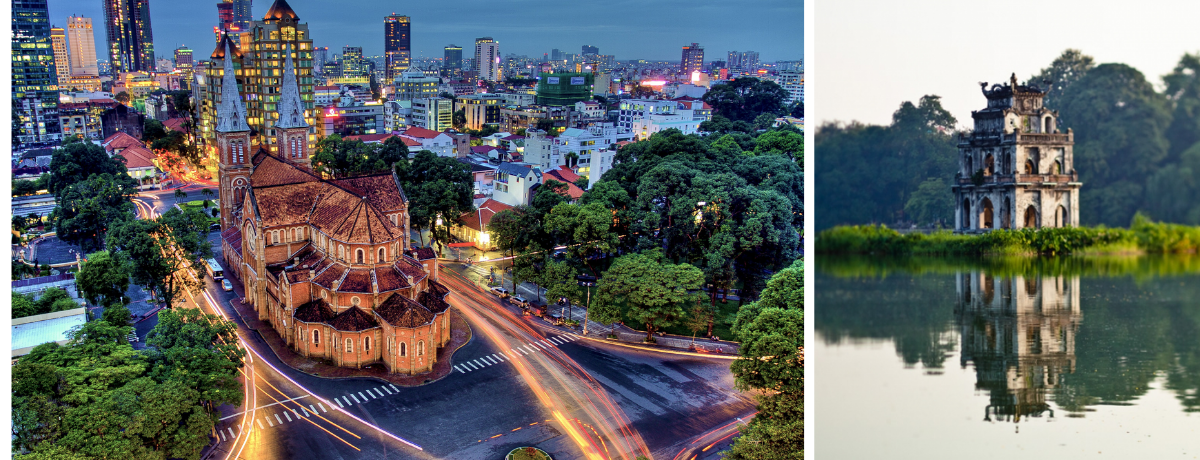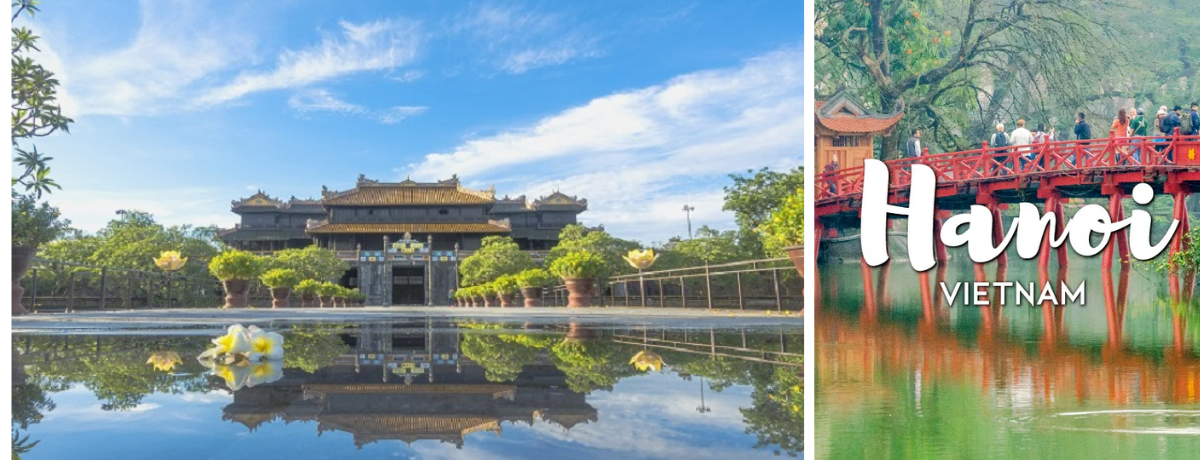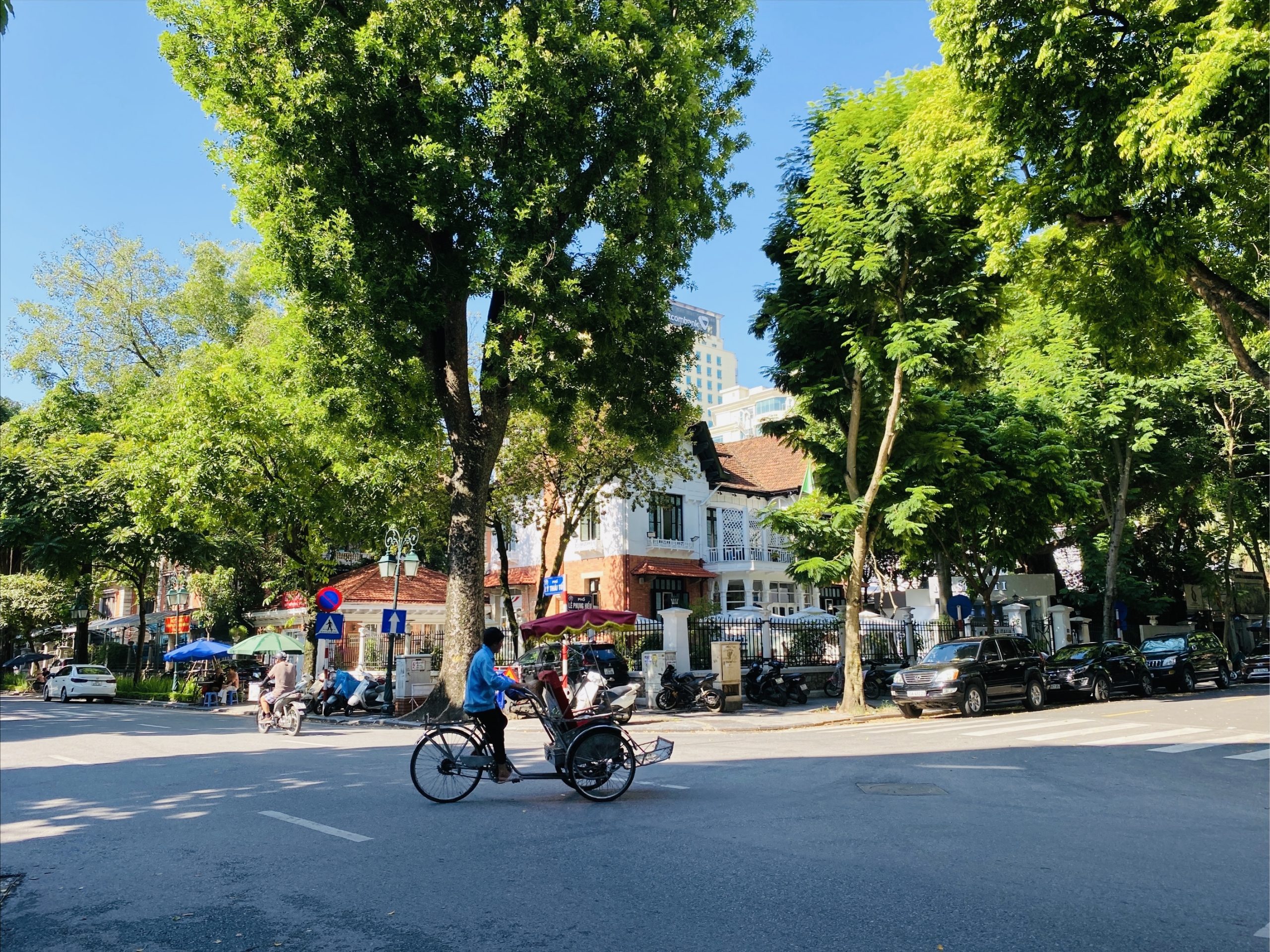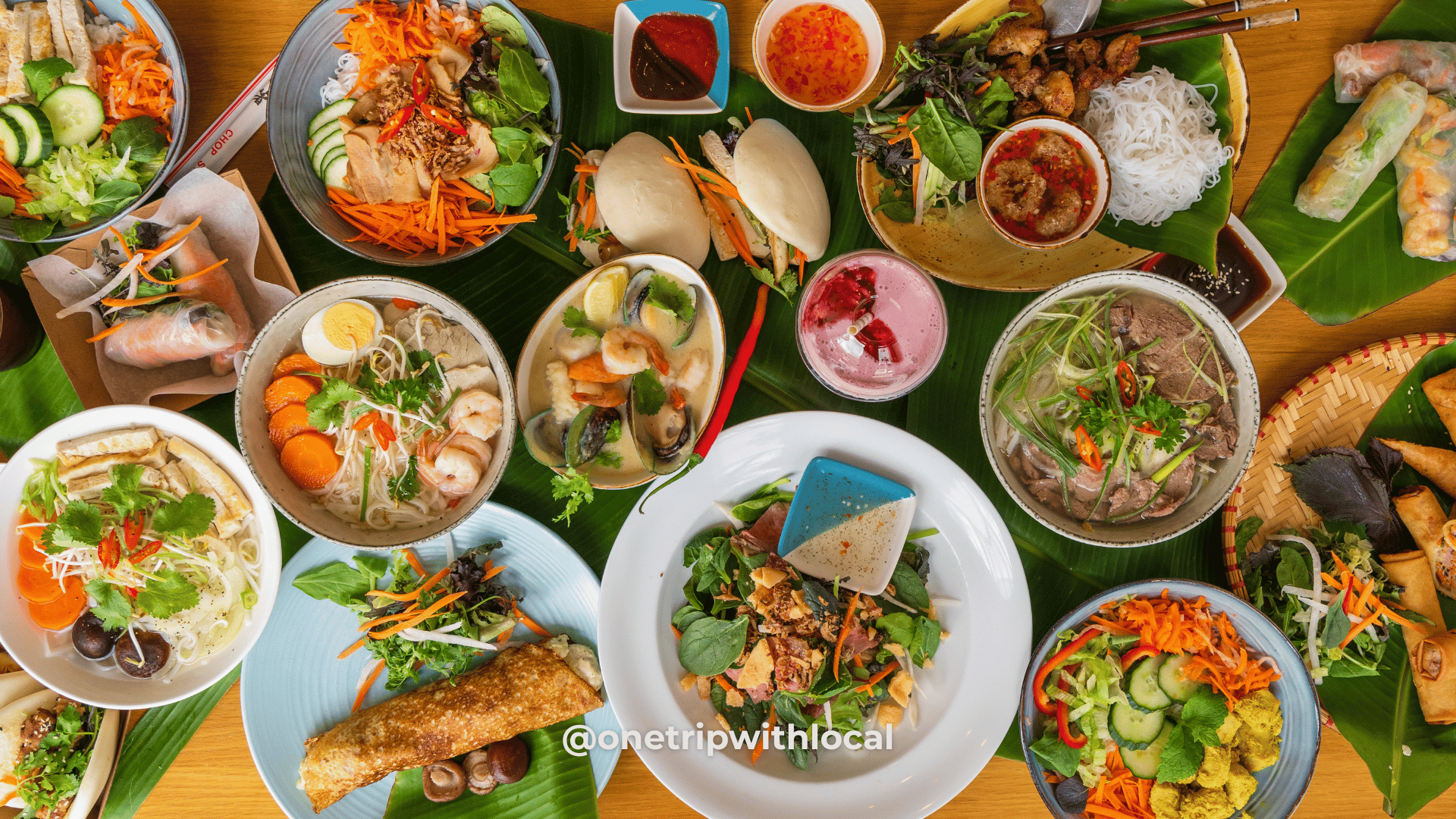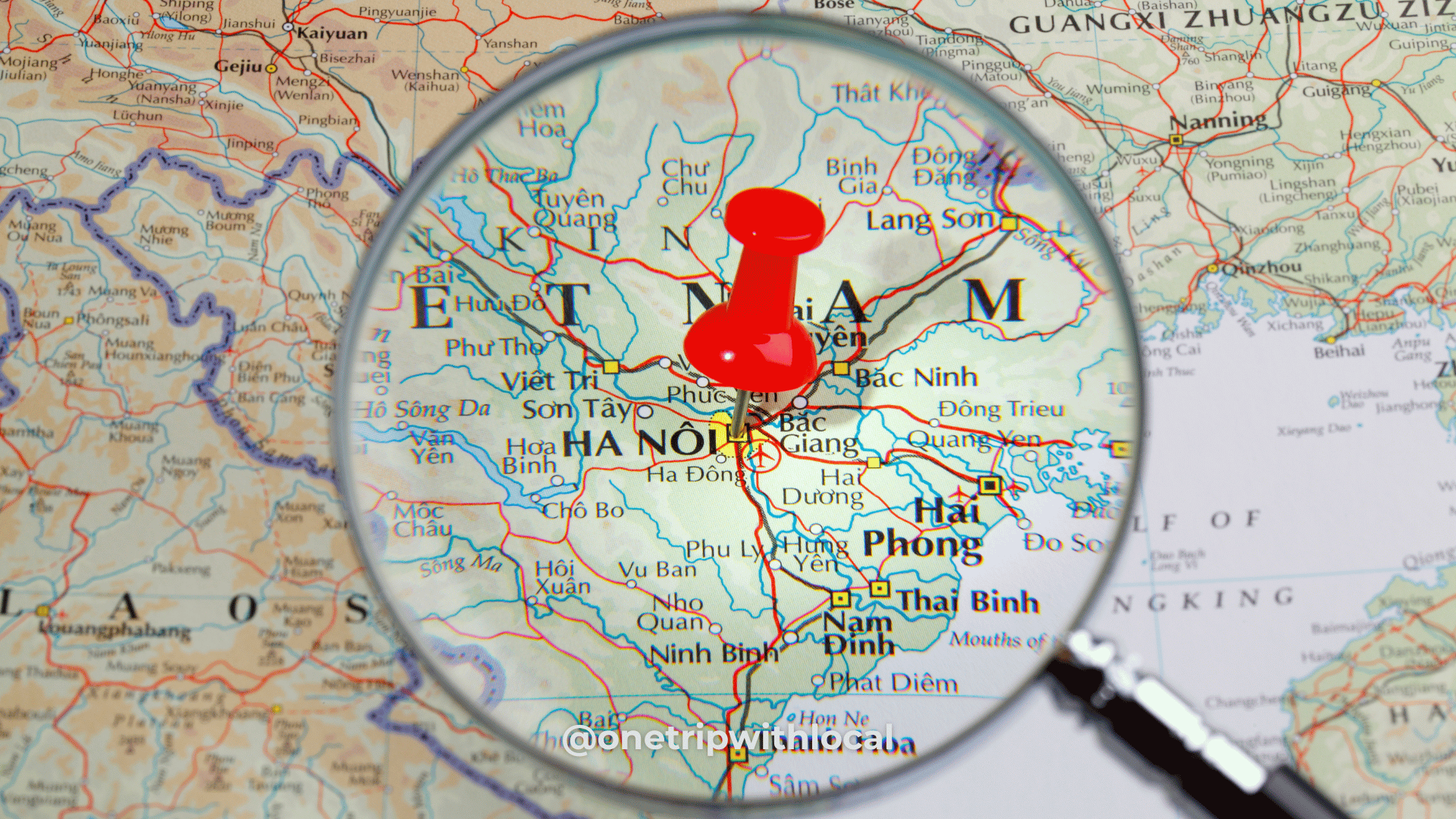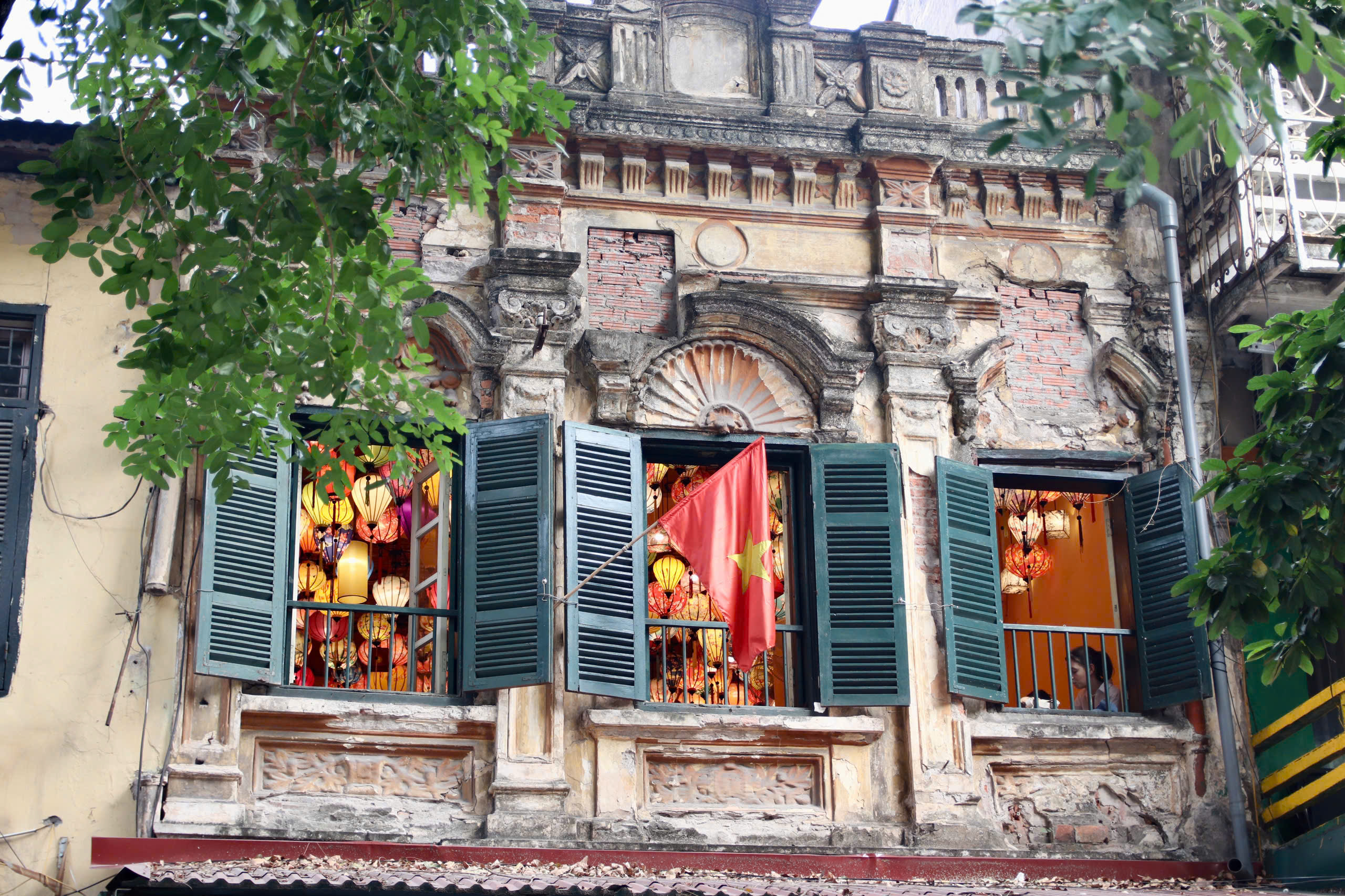Travel to Vietnam: The Definitive Guide
Written by Tran Ngoc Quang
Planning a trip to Vietnam? This ultimate guide covers everything you need to know—from must-visit destinations to essential travel tips. Whether you’re a first-time visitor or a seasoned traveler, this guide will help you make the most of your journey.
What You’ll Discover:
- Why Vietnam should be on your bucket list
- Top places to visit & things to do
- Delicious Vietnamese cuisine to try
- Transportation, safety tips & cultural etiquette
- Sustainable travel practices & FAQs
- and more
Let’s get started!
Chapter 1:
Why Vietnam Should Be Your Next Destination
Vietnam is a land of breathtaking contrasts, rich history, and unforgettable flavors. This chapter takes you on a journey through the country’s most captivating aspects:
Ready to explore this Southeast Asian gem?
- Review the stunning diversity of Vietnam’s landscapes
- Learn why Vietnam offers exceptional value for travelers
- Experience the genuine warmth of Vietnamese hospitality
- and more
Now, let’s dive in! Explore the highlights and discover why Vietnam should be at the top of your travel list.
A Land of Contrasts
Vietnam offers breathtaking diversity in a compact space. Limestone karsts rise from emerald waters in Ha Long Bay. Terraced rice fields cascade down mountainsides in Sapa. Ancient temples stand beside modern skyscrapers in Ho Chi Minh City. Pristine beaches stretch along a 2,000-mile coastline. With eight UNESCO World Heritage Sites, Vietnam packs extraordinary natural and cultural wonders into one accessible country.
Rich History and Culture
Vietnam’s 4,000-year history creates a fascinating cultural tapestry. Ancient temples and imperial citadels showcase Vietnamese dynasties. French colonial architecture adds European flair. War memorials tell stories of resilience. Traditional water puppet shows delight visitors. Buddhist pagodas, Catholic churches, and Cao Dai temples reveal diverse spiritual practices. Vietnam expertly balances tradition with rapid modernization.
Delicious Cuisine
Vietnamese food ranks among the world’s healthiest and most flavorful cuisines. Fresh herbs, vibrant vegetables, and balanced flavors define each dish. Taste the perfect bowl of pho in Hanoi. Try crispy banh xeo pancakes in Hoi An. Sample fresh seafood in coastal towns. Each region offers distinctive specialties. Cooking classes let you bring these flavors home. Vegetarians and vegans find plentiful options throughout the country.
Affordable Adventure
Vietnam delivers exceptional value for travelers. Luxury hotels cost a fraction of Western prices. Street food feasts cost just a few dollars. Transportation remains affordable whether by plane, train, or bus. Activities like cooking classes, walking tours, and boat trips won’t break your budget. Vietnam accommodates backpackers, luxury travelers, and families with options at every price point.
Warm Hospitality
The Vietnamese welcome visitors with genuine warmth. Shopkeepers invite you in for tea. Farmers wave as you pass their fields. Children practice English with shy smiles. This natural friendliness makes solo travel comfortable and family trips memorable. Learning a few Vietnamese phrases opens even more doors. The Vietnamese pride themselves on making guests feel welcome – expect to leave with new friends.
Chapter 2:
Planning Your Trip: Essential Information Before You Go
Begin your journey through Vietnam with confidence! This chapter covers vital pre-trip preparations and in-country practicalities to ensure a smooth, enjoyable experience.
Take a moment to review:
- Basic Vietnamese phrases
- Visa requirements and application options
- Best seasons for visiting different regions
- Flight information and major airports
- Essential health preparations
- Money matters and budgeting
- Packing recommendations
- Mobile connectivity solutions
- and more
Dive into this comprehensive chapter to transform from anxious traveler to confident explorer.
1. Visa Requirements
Vietnam requires most foreigners to obtain a visa before entry. Understanding your options saves time and money.
E-Visa
The e-visa offers the simplest solution for most tourists:
- Cost: $25 USD
- Processing time: 3-5 business days
- Valid for: Single entry, up to 30 days
- Application: Through the official government website (https://evisa.xuatnhapcanh.gov.vn)
- Requirements: Digital passport photo, passport information, entry/exit dates, accommodation details
- Benefits: No need to visit an embassy or mail your passport
Visa on Arrival
Best for flexibility or if you need longer stays:
- Cost: $25-$50 USD approval letter + $25 USD stamping fee
- Processing time: 1-3 business days for approval letter
- Valid for: Single or multiple entry, 30-90 days
- Application: Through a reputable travel agency online
- Requirements: Passport details, arrival information, approval letter, passport photos, completed form
- Benefits: Options for longer stays, multiple entries
Visa Exemptions
Some nationalities can enter visa-free:
- ASEAN countries: Typically 21-30 days
- Select European countries: 15 days (including UK, France, Germany, Italy, Spain)
- South Korea, Japan: 15 days
- Always check the latest information as exemptions change
Land Border Crossings
For travelers entering from Cambodia, Laos, or China:
- E-visa works at major international border checkpoints
- Ensure your visa specifies your planned entry point
- Border crossings can involve additional fees and longer processing
- Prepare paperwork in advance to avoid delays
Always check the official Vietnamese Immigration Department website for the most current information, as visa policies can change.
2. Best Time to Visit
Vietnam stretches over 1,000 miles from north to south, creating distinct climate zones. The best time to visit depends on your destinations and preferred activities.
Northern Vietnam (Hanoi, Sapa, Ha Long Bay)
- Best overall time: October to April
- October-November: Mild temperatures, clear skies, moderate rainfall
- December-February: Cool and dry (10-20°C/50-68°F), occasional drizzle in Hanoi, potential fog in Ha Long Bay
- March-April: Warming temperatures, low rainfall
- May-September: Hot, humid summers with heavy rain (25-35°C/77-95°F)
- September: Typhoon risk increases
Central Vietnam (Hue, Da Nang, Hoi An)
- Best overall time: February to July
- February-April: Warm temperatures, low rainfall, excellent beach weather
- May-July: Hot but bearable, minimal rainfall, sunny beaches
- August-November: Heavy rainfall, potential flooding, especially October-November
- December-January: Cooler temperatures, occasional rain
Southern Vietnam (Ho Chi Minh City, Mekong Delta, Phu Quoc)
- Best overall time: December to April
- December-April: Dry season, hot temperatures (25-35°C/77-95°F), ideal for beaches
- May-November: Wet season with brief, heavy afternoon downpours
- Rain rarely lasts all day, even in wet season
- Temperatures remain constant year-round (25-35°C/77-95°F)
Major Festivals
Plan around these cultural highlights:
- Tet (Lunar New Year): Most important holiday (January/February). Businesses close for a week, prices increase, but cultural experiences abound.
- Hoi An Lantern Festival: 14th day of each lunar month
- Mid-Autumn Festival: September/October
- Hue Festival: April/June (biennial, even-numbered years)
- Independence Day: September 2nd
Travel Seasons
- High Season: July-August (European summer holidays), December-January (Christmas/New Year)
- Shoulder Season: April-June, September-November
- Low Season: Varies by region, generally during each area’s rainy season
For a comprehensive Vietnam experience, consider visiting between November and April, starting in the south and moving north as temperatures warm.
3. Flights
Most international travelers enter Vietnam through one of three main airports.
Main International Airports
- Tan Son Nhat International Airport (SGN) in Ho Chi Minh City
- Largest airport with most international connections
- Major hub for Southeast Asian connections
- Noi Bai International Airport (HAN) in Hanoi
- Gateway to Northern Vietnam
- Good connections to East Asian countries
- Da Nang International Airport (DAD)
- Growing number of international flights
- Ideal for Central Vietnam access
Popular Airlines
- Vietnam Airlines: National carrier with most domestic routes
- VietJet Air: Low-cost carrier with extensive domestic network
- Bamboo Airways: Newer full-service airline
- International carriers: Emirates, Qatar Airways, Singapore Airlines, ANA, Cathay Pacific
Finding Deals
- Book 3-6 months in advance for best prices
- Use price comparison sites like Skyscanner, Google Flights, or Momondo
- Consider nearby hub airports (Bangkok, Singapore, Hong Kong) for better deals
- Sign up for fare alerts from airlines serving Vietnam
4. Travel Insurance
Travel insurance is essential for Vietnam. Healthcare facilities vary widely in quality, and even minor medical issues can become expensive.
What to Look For
- Medical coverage: Minimum $100,000 USD
- Emergency evacuation: Essential for remote areas
- Repatriation: Coverage to return you home in case of serious illness
- Coverage for activities: Check if trekking, motorbiking, or water sports are covered
- Trip cancellation/interruption: Protects your investment
- Baggage loss/theft: Important in busy tourist areas
Recommended Providers
- World Nomads: Popular for adventurous travelers
- SafetyWing: Subscription-based insurance good for longer trips
- Allianz: Comprehensive coverage for families
- InsureMyTrip: Comparison site to find the best plan
Filing Claims
- Keep detailed receipts for all medical expenses
- File police reports immediately for theft
- Take photos of damaged items
- Contact your insurance company’s emergency assistance line before seeking expensive medical care
5. Vaccinations
Protect your health with proper vaccinations and precautions before traveling to Vietnam.
Recommended Vaccinations
- Routine vaccines: MMR, Tdap, chickenpox, polio, influenza
- Hepatitis A: Recommended for all travelers
- Hepatitis B: Recommended for longer stays
- Typhoid: Especially for smaller cities and rural areas
- Japanese Encephalitis: For rural areas and longer stays
- Rabies: Consider for adventure travelers, children, or rural stays
- COVID-19: Follow current requirements
Malaria and Dengue
- Malaria: Present in some rural areas, especially near borders
- Antimalarial medication: Generally not needed for major tourist areas
- Dengue fever: Present throughout Vietnam, especially during rainy season
- Prevention: Use insect repellent, wear long sleeves/pants, sleep under mosquito nets
General Health Precautions
- Drink bottled water
- Avoid ice in rural areas
- Eat at busy restaurants with high turnover
- Wash hands frequently
- Use hand sanitizer regularly
- Pack a basic first-aid kit
Consult with a travel medicine specialist or your doctor at least 4-6 weeks before your trip for personalized advice.
6. Currency
Understanding Vietnam’s currency helps you budget effectively and avoid common tourist pitfalls.
Vietnamese Dong (VND)
- Vietnam uses the dong (₫) exclusively
- Notes come in denominations of 1,000; 2,000; 5,000; 10,000; 20,000; 50,000; 100,000; 200,000; 500,000 VND
- No coins in circulation
- The exchange rate is approximately 25,000 VND = 1 USD (check current rates)
- Many notes look similar – organize them by denomination
Money Exchange
- Best places to exchange: Banks, authorized money changers, hotels (convenience but worse rates)
- Airports offer fair rates but not the best
- Never exchange with unauthorized street vendors
- Always count your money carefully before leaving
- Keep exchange receipts until you leave Vietnam
ATMs
- Widely available in cities and tourist areas
- Withdrawal limits: Typically 2-3 million VND per transaction
- Fees: 40,000-60,000 VND per withdrawal plus your bank’s fees
- Citibank and HSBC ATMs allow higher withdrawal limits
- Inform your bank of travel plans to prevent card blocks
Credit Cards
- Accepted at major hotels, restaurants, and shopping centers
- Visa and Mastercard widely accepted; American Express less so
- Small businesses and markets usually require cash
- Credit card fraud can occur – keep your card in sight
- Check for foreign transaction fees before your trip
Money Tips
- Always carry small denominations for taxis, street food, and markets
- US dollars are accepted in some tourist areas but at poor rates
- The VND has many zeros – double-check your calculations
- Use a currency converter app to avoid confusion
- Keep larger bills separate from spending money
7. Budgeting
Vietnam offers exceptional value, but understanding typical costs helps plan your trip effectively.
Accommodation
- Budget: $5-15 USD (hostels, guesthouses)
- Mid-range: $20-50 USD (3-star hotels, nice guesthouses)
- Luxury: $60-200+ USD (4-5 star hotels, resorts)
- Prices higher in Hanoi, Ho Chi Minh City, Hoi An, and during peak seasons
Food and Drink
- Street food meal: $1-3 USD
- Local restaurant meal: $3-7 USD
- Western restaurant meal: $7-15 USD
- Beer (local): $1-2 USD
- Coffee: $1-2 USD
- Bottled water: $0.50 USD
Transportation
- Short taxi ride: $2-5 USD
- Motorbike rental: $5-10 USD/day
- Bicycle rental: $1-3 USD/day
- Domestic flight: $30-100 USD
- Overnight train: $20-50 USD
- Long-distance bus: $5-15 USD
Activities
- Museums/temples: $1-5 USD
- Day tours: $15-50 USD
- Cooking class: $20-40 USD
- Ha Long Bay overnight cruise: $80-250 USD
- Multi-day trekking tour: $40-100 USD/day
Sample Daily Budgets
- Backpacker: $25-35 USD
- Hostel dorm
- Street food and local restaurants
- Public transportation and walking
- Free activities, select paid attractions
- Mid-range: $60-100 USD
- Private hotel room
- Mix of local and Western restaurants
- Taxis, ride-shares, and organized transportation
- Regular paid activities and tours
- Luxury: $150+ USD
- 4-5 star hotel
- Fine dining and upscale restaurants
- Private transportation
- Premium tours and experiences
Money-Saving Tips
- Eat where locals eat
- Travel during shoulder seasons
- Negotiate prices for souvenirs and services
- Book domestic transportation in advance
- Consider homestays for authentic experiences
- Use the Grab app instead of regular taxis
8. Packing Essentials
Pack strategically for Vietnam’s varied climates and activities.
Clothing
- Lightweight, breathable clothes (cotton, linen, moisture-wicking fabrics)
- 1-2 modest outfits for temples (covering shoulders and knees)
- Light rain jacket or poncho (year-round)
- Swimwear
- Comfortable walking shoes
- Flip-flops or sandals
- Light sweater or jacket (for northern Vietnam or air conditioning)
- Hat and sunglasses
Toiletries and Health
- Sunscreen (expensive in Vietnam)
- Insect repellent (with DEET)
- Hand sanitizer
- Wet wipes
- Basic first-aid kit
- Prescription medications in original containers
- Over-the-counter medications (pain relievers, anti-diarrheal)
- Motion sickness medication (for winding roads)
Technology
- Universal power adapter (Vietnam uses types A, C, and F outlets)
- Portable charger
- Camera
- Phone with offline maps downloaded
- Waterproof case or bag
- Headphones
Other Essentials
- Travel wallet (for passport, cash, cards)
- Daypack for excursions
- Reusable water bottle with filter
- Travel towel (for budget accommodations)
- Earplugs and eye mask
- Ziploc bags for organization
- Small padlock for hostels
- Toilet paper or tissues (for public restrooms)
Special Considerations
- Northern Vietnam (winter): Add a warm jacket, light gloves, and scarf
- Trekking: Include hiking shoes, quick-dry clothing, and a headlamp
- Beach destinations: Extra swimwear and beach-friendly footwear
- Rainy season: Waterproof bag covers and additional quick-dry clothing
@tilly.crome Side note – I’m in the very north & it’s even colder! #northvietnam #huulung #sapa #hagiang #hagiangloop #cold #layerup ♬ Messy – Lola Young
Packing light is recommended as laundry services are inexpensive and widely available.
9. Getting a Vietnamese SIM Card / Data Plan
Mobile connectivity in Vietnam is excellent and affordable.
Major Providers
- Viettel: Best overall coverage, especially in rural areas
- Vinaphone: Good coverage in cities and tourist areas
- Mobifone: Competitive prices with good urban coverage
Where to Buy
- Airport kiosks (most convenient but slightly more expensive)
- Provider stores in cities (look for official stores with logos)
- Convenience stores in tourist areas
Plans and Pricing
- Tourist SIM packages: $5-10 USD for 30 days
- Typically include 30-60GB of data
- Unlimited social media options available
- Local calls usually included
- International calls require additional credit
Registration Process
- Bring your passport (required by law)
- Staff will help register your SIM card
- Activation is usually immediate
- Keep your passport with you when purchasing
- Staff often help with basic setup
Tips
- Ask for the SIM to be tested before leaving the store
- Save the provider’s customer service number
- Take a photo of your SIM card package with details
- Consider eSIM options if your phone supports them
- Large denominations (100,000 VND and up) work best for recharging
Having a local SIM card makes navigation easier, enables ride-sharing apps, and keeps you connected in emergencies.
10. Learn Basic Vietnamese Phrases
Vietnamese is a tonal language that can be challenging, but learning a few key phrases enhances your experience and shows respect.
Essential Greetings
- Hello: Xin chào (sin chow)
- Thank you: Cảm ơn (cam un)
- Yes: Vâng (vung) / Có (coh)
- No: Không (khome)
- Goodbye: Tạm biệt (tam bee et)
- Excuse me/Sorry: Xin lỗi (sin loy)
Useful Phrases
- How much?: Bao nhiêu? (bow nyew)
- Too expensive: Đắt quá (dat qua)
- Delicious: Ngon (ngon)
- I don’t understand: Tôi không hiểu (toy khome hee-ew)
- Where is the bathroom?: Nhà vệ sinh ở đâu? (nya vay sinh oh dow)
- Can you help me?: Bạn giúp tôi được không? (ban zoop toy duoc khome)
Numbers
- 1: Một (moht)
- 2: Hai (hai)
- 3: Ba (ba)
- 4: Bốn (bon)
- 5: Năm (nam)
- 10: Mười (muoi)
- 100: Một trăm (moht tram)
- 1,000: Một nghìn (moht nghin)
Pronunciation Tips
- Vietnamese is tonal – the same spelling can have different meanings based on pitch
- Speak slowly and listen carefully
- Use a translation app for complex conversations
- Practice with locals who often appreciate your efforts
- Hand gestures help communication
- Learn numbers to help with purchases and transportation
Even basic phrases open doors and create positive connections with locals. Vietnamese people appreciate tourists who make an effort to learn their language.
Chapter 3:
Top Destinations in Vietnam: Where to Go and What to Do
In this chapter, we’ll take you on a journey through the top destinations in Vietnam, highlighting must-visit places and exciting activities.
Get ready to explore:
- Bustling cities like Hanoi and Ho Chi Minh City
- Stunning natural wonders such as Ha Long Bay and Phong Nha Caves
- Cultural gems including Hoi An and Hue
- Adventure hotspots for trekking, diving, and more
Discover where to go and what to do—let’s dive in!
1. Hanoi
Vietnam’s 1,000-year-old capital blends ancient temples with French colonial charm and modern energy.
Old Quarter
Hanoi’s historic heart features 36 guild streets, each traditionally dedicated to specific trades. Narrow lanes overflow with shops, street food vendors, and daily life. Don’t miss Hang Bac (Silver Street) and Hang Gai (Silk Street).
For the most authentic experience, consider the Hidden Hanoi Old Quarter Experience, where local guides reveal secret spots and share cultural insights that most tourists miss.
Hoan Kiem Lake and Ngoc Son Temple
The spiritual heart of Hanoi, this picturesque lake houses the tiny Ngoc Son Temple on an island reached by the iconic red Huc Bridge. Visit early morning to see locals practicing tai chi or late evening when families stroll around the water.
Ho Chi Minh Mausoleum and Museum
Pay respects to Vietnam’s revolutionary leader at this imposing marble mausoleum. Nearby, the museum chronicles Ho Chi Minh’s life through photographs and artifacts. Dress modestly and observe the solemn atmosphere.
Temple of Literature
Vietnam’s first national university, established in 1070, showcases beautiful traditional architecture and courtyard gardens. Stone stelae record the names of scholars who passed imperial examinations.
French Quarter
Contrasting with the bustling Old Quarter, this elegant district features tree-lined boulevards and colonial buildings. The Opera House and St. Joseph’s Cathedral showcase French architectural influence.
The Coffee, History, and Architecture of the French Quarter Tour offers fascinating insights into this period of Vietnam’s history while enjoying the area’s famous coffee culture.
Food Experience
Hanoi offers Vietnam’s most distinctive street food scene. Sample pho (beef noodle soup), bun cha (grilled pork with noodles), and egg coffee.
Food lovers should consider the Eat Like A Local- Hanoi Street Food & Hidden Path tour to discover authentic dishes in places only locals know. For those with dietary restrictions, the Hanoi Vegetarian Street Food Tour & Stories provides delicious alternatives with vegan options available.
War History Sites
History enthusiasts should visit Hoa Lo Prison (nicknamed the “Hanoi Hilton” by American POWs) and the Vietnam Military History Museum. For deeper insights into the country’s complex past, the Stories from Vietnam War at Not-to-go-alone Areas tour visits significant sites while sharing perspectives rarely found in guidebooks.
Families With Children
Families will enjoy the weekend Walking Street around Hoan Kiem Lake, the puppet shows at Thang Long Water Puppet Theatre, and the Train Street experience. The Kids Friendly Hanoi Old Quarter Tour specifically caters to young travelers with interactive activities and child-appropriate explanations of Vietnamese culture.
2. Ha Long Bay
This UNESCO World Heritage Site features thousands of limestone karsts rising dramatically from emerald waters. Ha Long Bay ranks among Vietnam’s most iconic landscapes.
Cruising Options
- Day Cruise: Covers main highlights but feels rushed (3-4 hours on bay)
- Overnight Cruise (1 night): Good balance of activities and relaxation
- Extended Cruise (2-3 nights): Best experience, reaches less-visited areas like Bai Tu Long Bay
- Luxury options: 5-star amenities, gourmet dining, private balconies
- Budget options: Basic cabins, standard meals, shared facilities
Must-See Attractions
- Sung Sot (Surprise) Cave: Massive limestone cavern with impressive formations
- Ti Top Island: Climb 400 steps for panoramic bay views, small beach for swimming
- Luon Cave: Small cave explored by kayak or bamboo boat
- Cua Van Floating Village: Traditional fishing community
- Dau Go Cave: Known for colorful stalactites and stalagmites
Activities
- Kayaking: Paddle through caves and around karsts
- Swimming: At designated beaches (seasonal)
- Squid fishing: Evening activity on most boats
- Tai chi: Morning sessions on upper decks
- Cooking demonstrations: Learn to make spring rolls
Practical Tips
- Book through reputable agencies to ensure safety standards
- Expect to pay $80-250 USD for overnight cruises (price reflects quality)
- Best weather: October-April (though December-February can be foggy)
- Bring motion sickness medication if sensitive
- The 4-hour drive from Hanoi can be broken up with rest stops
3. Sapa
Nestled in the Hoang Lien Son mountains, Sapa offers Vietnam’s most spectacular rural landscapes and cultural experiences with ethnic minority villages.
Rice Terraces
The terraced rice fields around Sapa rank among Asia’s most beautiful agricultural landscapes. Visit in late May-June (planting) or September-October (harvest) for the most vibrant colors.
Trekking
- Easy treks: Cat Cat Village (2-3 hours round trip)
- Moderate treks: Lao Chai and Ta Van (1 day)
- Challenging treks: Fansipan summit (2-3 days) or Y Linh Ho (2 days)
- Multi-day options with homestays in minority villages
Ethnic Minority Cultures
- Black Hmong: Known for indigo clothing and silver jewelry
- Red Dao: Recognized by distinctive red headdresses
- Tay: Living in wooden stilt houses in valleys
- Giay: Known for traditional weaving skills
- Visit local markets (Bac Ha Sunday Market is the most famous)
Fansipan Mountain
Mainland Southeast Asia’s highest peak (3,143m) offers challenging trekking or a convenient cable car option. The summit area features Buddhist temples and stunning views on clear days.
Practical Tips
- Altitude: 1,500m brings cooler temperatures year-round
- December-February: Cold (5-10°C) with occasional snow
- Prepare for rain year-round, especially June-August
- Book homestays through reputable agencies for authentic experiences
- Expect persistent but friendly vendor approaches in town
4. Ninh Binh
Often called “Ha Long Bay on land,” Ninh Binh features limestone karsts rising from rice fields rather than water. This emerging destination offers spectacular scenery without the crowds.
Tam Coc
Take a rowboat journey along the Ngo Dong River, passing through three natural limestone caves and between towering karsts. Tam Coc’s landscapes are most beautiful during rice harvests (May-June and September-October).
Trang An
This UNESCO World Heritage Site offers a more tranquil boat experience than Tam Coc. The route passes through caves, temples, and filming locations from “Kong: Skull Island.”
Hang Mua Peak
Climb 500 steps for the region’s most breathtaking viewpoint. The dragon-themed staircase leads to panoramic views over Tam Coc’s river and karst landscape.
Bich Dong Pagoda
This three-tiered pagoda built into a mountainside dates from the 15th century. Each level offers increasingly impressive views over the surrounding landscape.
Practical Tips
- Base yourself in Tam Coc or Ninh Binh City (more amenities)
- Easy day trip from Hanoi (2 hours) or worth 2-3 days exploration
- Rent a bicycle or motorbike to explore independently
- Visit early morning or late afternoon to avoid tour crowds
- Combined tickets available for multiple attractions
5. Hue
Vietnam’s imperial capital (1802-1945) maintains a regal atmosphere with its UNESCO-listed citadel, royal tombs, and distinctive cuisine.
Imperial Citadel
This massive complex housed Vietnam’s last royal dynasty, the Nguyen emperors. The walled fortress contains the Purple Forbidden City, royal residences, temples, and gardens. Many structures show damage from the 1968 Tet Offensive, while others have been beautifully restored.
Royal Tombs
The Nguyen emperors built elaborate final resting places outside the city:
- Khai Dinh Tomb: Elaborate concrete and glass mosaic designs
- Tu Duc Tomb: Peaceful grounds with lakes and pavilions
- Minh Mang Tomb: Symmetrical design with beautiful gardens
- Each tomb reflects the personality of the emperor it commemorates
Thien Mu Pagoda
This seven-story pagoda overlooking the Perfume River has become Hue’s iconic symbol. The temple features beautiful grounds and houses the car driven by the monk who self-immolated in Saigon in 1963.
Dong Ba Market
Experience local life at this bustling market offering everything from food to handicrafts. Try Hue specialties like banh khoai (savory pancakes) from food vendors.
Perfume River
Take a dragon boat cruise along this poetic waterway. Evening cruises often include traditional folk music performances.
Practical Tips
- Allocate at least two days to explore properly
- Hire a driver for visiting the scattered tombs
- Visit the Citadel early morning to avoid heat and crowds
- Try Hue’s unique royal cuisine, including bun bo Hue (spicy beef noodle soup)
- February-April offers the most pleasant weather
6. Hoi An
This exquisitely preserved ancient trading port charms visitors with lantern-lit streets, tailor shops, and a magical atmosphere.
Ancient Town
Hoi An’s UNESCO-protected Old Town features wooden-fronted shophouses, ancestral homes, and Chinese clan halls dating from the 15th-19th centuries. The car-free streets make exploration a pleasure. Don’t miss the iconic Japanese Covered Bridge and the old merchant houses like Tan Ky House.
Tailoring
Hoi An’s 400+ tailor shops can create custom clothing in 24-48 hours. Quality and prices vary widely – seek recommendations, be specific about materials, and allow time for alterations.
Countryside and Beaches
- Tra Que Herb Village: Organic gardens supplying Hoi An’s restaurants
- An Bang Beach: Clean sands and seafood restaurants (5km from town)
- Cam Thanh coconut palm forest: Basket boat experiences
- Nearby rice fields: Cycling and photography opportunities
Culinary Experiences
Hoi An offers distinctive local specialties:
- Cao lau: Noodles with pork and greens (only authentic in Hoi An)
- White rose dumplings: Delicate shrimp dumplings
- Banh mi: Try Madam Khanh (“The Banh Mi Queen”)
- Cooking classes including market tours
Lantern Festival
On the 14th day of each lunar month, Hoi An turns off electric lights and illuminates the town with colorful lanterns. Visitors release floating lanterns on the Thu Bon River.
Practical Tips
- Stay in the Ancient Town for atmosphere, Cam Pho for value, or An Bang for beach access
- Purchase the Old Town ticket (120,000 VND) for entry to historic sites
- February-April and September-October offer the best weather
- Flooding can occur October-December (contributing to the atmospheric feel)
- Bicycle rental provides the ideal transportation for exploring
7. Da Nang
Vietnam’s fastest-growing city offers beautiful beaches, mountain scenery, and easy access to nearby cultural sites.
My Khe Beach
This 30km stretch of white sand, known as “China Beach” during the American War, offers excellent swimming and surfing conditions. Beachfront resorts range from budget to ultra-luxury.
Marble Mountains
These five limestone and marble hills contain caves, tunnels, buddhist sanctuaries, and viewpoints. The largest, Thuy Son (Water Mountain), features impressive cave pagodas and panoramic city views.
Ba Na Hills
This mountaintop resort complex features the famous Golden Bridge (held by giant stone hands), a replica French village, and various amusement park attractions. The cable car ride offers spectacular views.
Son Tra Peninsula
Also called Monkey Mountain, this forested peninsula provides scenic drives, hidden beaches, and views of the massive Lady Buddha statue. The rare red-shanked douc langurs make their home here.
Dragon Bridge
Da Nang’s iconic dragon-shaped bridge breathes fire and water on weekend evenings, creating a spectacular show.
Hai Van Pass
Made famous by Top Gear, this scenic mountain pass between Da Nang and Hue offers breathtaking coastal views. Travel by motorcycle, car, or train.
Practical Tips
- Use Da Nang as a comfortable base for exploring Hoi An and Hue
- Direct international flights make it an easy entry point
- May-August offers the best beach weather
- Grab bikes and taxis provide easy transportation
- The city bridges illuminate with colorful displays each evening
8. Nha Trang
Vietnam’s most developed beach destination offers a beautiful bay, offshore islands, and a lively atmosphere.
Beaches
The 6km main beach features fine white sand and clear water with a developed promenade lined with hotels and restaurants. Quieter beaches include Bai Dai Beach (30 minutes south) and Doc Let Beach (1 hour north).
Island Hopping
Daily boat tours visit four islands in Nha Trang Bay:
- Hon Mun: Best snorkeling and diving with coral reefs
- Hon Tam: Beach resort with water sports
- Hon Mot: Floating bar and seafood restaurants
- Tri Nguyen Aquarium on Hon Mieu Island
Po Nagar Cham Towers
These well-preserved 7th-12th century towers showcase the Hindu-influenced Cham civilization that once ruled central Vietnam. The hilltop location offers city views.
Mud Baths
Several spa complexes around Nha Trang offer therapeutic mud baths, mineral springs, and spa treatments at reasonable prices.
Vinpearl Land
This island theme park and resort complex is reached by the world’s longest over-water cable car. Attractions include water parks, an aquarium, and amusement rides.
Practical Tips
- February-September offers the best weather
- October-December brings heavy rainfall
- The city has a significant Russian presence with signs and menus in Russian
- Book island trips through your hotel or reputable agencies
- Seafood restaurants along Tran Phu Street offer fresh catches
9. Ho Chi Minh City
Vietnam’s largest city (still called Saigon by locals) pulses with energy, commerce, and reminders of its pivotal role in modern Vietnamese history.
District 1 Highlights
The downtown core contains most major attractions:
- Notre Dame Cathedral: Neo-Romanesque cathedral from the French era
- Central Post Office: Gothic masterpiece designed by Gustave Eiffel
- Reunification Palace: Site of South Vietnam’s surrender in 1975
- War Remnants Museum: Powerful exhibitions on the Vietnam War
- Nguyen Hue Walking Street: Pedestrian boulevard with people-watching
Cu Chi Tunnels
This vast network of underground tunnels 70km northwest of the city served as Viet Cong headquarters during the American War. Tours explain guerrilla warfare tactics and let visitors crawl through widened sections of the tunnels.
Ben Thanh Market
The city’s most famous market sells everything from souvenirs to street food. Practice bargaining skills here but expect higher prices than less touristy markets like Binh Tay in Chinatown.
Modern Vietnam
Experience contemporary Vietnamese life:
- Bitexco Tower Skydeck: City views from 49th floor
- Nguyen Hue Walking Street: Gathering place for young Vietnamese
- Craft beer scene: Pasteur Street and Heart of Darkness breweries
- Contemporary art: Galleries in converted colonial buildings
Day Trips
- Mekong Delta: Day tours to My Tho/Ben Tre (better as overnight trip)
- Can Gio Mangrove Forest: UNESCO Biosphere Reserve
- Vung Tau: Beach escape (2 hours by car or hydrofoil)
Practical Tips
- Use the name “Ho Chi Minh City” in official contexts, but many locals still say “Saigon”
- The rainy season (May-November) brings brief but intense daily downpours
- District 1 contains most tourist amenities but try District 3 for local atmosphere
- The city is relatively safe but watch for motorbike bag-snatching
- Use metered taxis or Grab for reliable transportation
10. Mekong Delta
Vietnam’s “rice bowl” offers a water world of floating markets, fruit orchards, and rural canal life.
Floating Markets
- Cai Rang (near Can Tho): Largest wholesale floating market, best experienced at dawn
- Phong Dien: Smaller, more authentic market with less tourism
- Cai Be: Convenient for day trips from Ho Chi Minh City
- Visit between 5-7am for authentic trading activity
Can Tho
The delta’s largest city makes the best base for exploration:
- Take early morning boat trips to floating markets
- Visit fruit orchards and cottage industry workshops
- Explore Binh Thuy Ancient House with its colonial architecture
- Stroll along Ninh Kieu Wharf at sunset
Ben Tre and Tra Vinh
- Ben Tre: Known for coconut production and peaceful waterways
- Tra Vinh: Home to beautiful Khmer pagodas and distinct culture
- Both offer authentic homestay experiences
Chau Doc
This border town near Cambodia features cultural diversity:
- Floating villages of ethnic Vietnamese and Cham communities
- Sam Mountain for sunset views over the delta plains
- Tra Su Cajuput Forest with boat rides through flooded forest
- Ba Chua Xu Temple, an important pilgrimage site
Practical Tips
- Overnight trips offer more authentic experiences than day tours from Ho Chi Minh City
- December-April brings dry weather and fruit harvest season
- Bring mosquito repellent, sunscreen, and a hat
- Learn basic Vietnamese phrases for rural areas where English is limited
- Consider a multi-day trip ending in Cambodia via riverboat to Phnom Penh
11. Phu Quoc Island
Vietnam’s largest island offers idyllic beaches, national park wilderness, and developing tourism infrastructure.
Beaches
- Bai Sao (Star Beach): White powder sand and shallow turquoise water
- Long Beach: 20km stretch with sunset views and resort development
- Ong Lang Beach: Relaxed atmosphere with boutique resorts
- Ganh Dau: Secluded northern beach with views of Cambodia
Phu Quoc National Park
This protected area covers more than half the island:
- Hiking trails through primary rainforest
- Diverse wildlife including hornbills and macaques
- Mountain streams and waterfalls (best in rainy season)
- Guided tours available from local operators
Attractions
- Vinpearl Land: Theme park and safari
- Cable car to Hon Thom (Pineapple Island): World’s longest sea cable car
- Fish sauce factories: Learn about the island’s famous export
- Pepper plantations: Phu Quoc produces high-quality black pepper
- Ham Ninh fishing village: Seafood restaurants on stilts
Practical Tips
- November-April offers ideal weather (dry season)
- May-October brings rain but lower prices and fewer crowds
- Direct international flights connect from major Asian cities
- Motorbike rental provides the best transportation
- The island is rapidly developing – visit soon for more natural experiences
12. Mui Ne
This coastal resort area offers excellent kitesurfing conditions, unique sand dunes, and a relaxed atmosphere.
Sand Dunes
- White Sand Dunes: Vast desert-like landscape, best at sunrise
- Red Sand Dunes: Smaller dunes near town, popular for sunset
- Fairy Stream: Canyon-like formation with red and white sandstone
- Quad bikes and sand sledding available at both dune areas
Beaches and Water Sports
- Mui Ne Beach: 15km of palm-fringed beach with steady winds
- World-class kitesurfing and windsurfing (November-March)
- Kitesurfing schools offering lessons for beginners
- Swimming conditions vary with strong currents in places
Fishing Village
The original Mui Ne fishing village features colorful boats and morning fish markets. Photographers will appreciate the early morning activity as boats return with their catches.
Practical Tips
- November-April offers dry weather and reliable winds for kitesurfing
- The area experiences less rainfall than other parts of Vietnam
- Resort development stretches along 15km of coastline
- Public buses connect from Ho Chi Minh City (5 hours)
- Grab is not available – use taxis or motorbike taxis
Off-the-Beaten-Path Destinations
For travelers seeking less-visited places, Vietnam offers numerous hidden gems.
Ha Giang Loop
This remote northern mountainous province offers Vietnam’s most spectacular scenery:
- 350km motorcycle loop through dramatic limestone mountains
- Ethnic minority villages of Hmong, Dao, and Tay people
- Ma Pi Leng Pass – Vietnam’s most breathtaking road
- Dong Van Karst Plateau Geopark (UNESCO Global Geopark)
- Best visited April-May or September-October
Phong Nha-Ke Bang National Park
This UNESCO site contains the world’s largest caves:
- Son Doong: World’s largest cave (limited expensive tours)
- Paradise Cave: Accessible cave with spectacular formations
- Phong Nha Cave: Boat journey through river cave
- Dark Cave: Adventure experience with mud baths and zip lines
- Jungle trekking and rural homestays available
Con Dao Islands
This remote archipelago offers Vietnam’s best beaches and diving:
- Former prison island with historical significance
- Pristine beaches with few visitors
- Sea turtle nesting sites (May-October)
- Excellent snorkeling and diving conditions
- National park covering most of the archipelago
- Reached by flight from Ho Chi Minh City
Mai Chau
This peaceful valley in northwestern Vietnam provides:
- Traditional White Thai stilt house villages
- Beautiful rice terraces and mountain scenery
- Homestay experiences with local families
- Cycling through rural villages and farmland
- Excellent alternative to more touristic Sapa
- Easy weekend trip from Hanoi (3-4 hours)
Practical Tips for Off-the-Beaten-Path Travel
- Allow extra time for transportation and unexpected changes
- Bring cash as ATMs may be limited or nonexistent
- Learn basic Vietnamese phrases as English is less common
- Research weather patterns carefully for seasonal roads
- Consider hiring local guides to support communities and gain cultural insights
Chapter 4:
Suggested Itineraries: Planning Your Perfect Vietnam Trip
This chapter provides expertly crafted itineraries to help you plan an unforgettable journey.
Here’s what you’ll find:
- Tailored itineraries for different travel styles – adventure, culture, relaxation, and more.
- Must-visit destinations and hidden gems.
- Time-saving tips to make the most of your trip.
- and more
📌 Ready to map out your dream Vietnam adventure? Let’s dive in!
1. One Week in Vietnam
With just one week, focus on either northern or southern Vietnam to minimize travel time.
Option 1: Northern Highlights (Hanoi and Surroundings)
- Day 1: Hanoi arrival and Old Quarter exploration
- Start with the Hidden Hanoi Old Quarter Experience for orientation
- Evening water puppet show
- Day 2: Hanoi cultural sites
- Morning: Temple of Literature and Ho Chi Minh Complex
- Afternoon: French Quarter Tour
- Evening: Hanoi Street Food Tour
- Day 3-4: Ha Long Bay overnight cruise
- Kayaking, cave exploration, swimming (seasonal)
- Seafood meals and sunset views
- Day 5: Ninh Binh day trip
- Tam Coc boat ride
- Hang Mua peak climb
- Bich Dong Pagoda
- Day 6: Hanoi museums and shopping
- Vietnam Museum of Ethnology
- Women’s Museum
- Final souvenir shopping
- Day 7: Departure
Option 2: Southern Exploration (Ho Chi Minh City and Mekong)
- Day 1: Ho Chi Minh City arrival and District 1 sights
- Notre Dame Cathedral and Central Post Office
- Reunification Palace
- Evening: Pham Ngu Lao Street
- Day 2: War history day
- War Remnants Museum
- Cu Chi Tunnels half-day tour
- Day 3: Ho Chi Minh City exploration
- Ben Thanh Market
- Cholon (Chinatown)
- Bitexco Tower sunset views
- Day 4-5: Mekong Delta overnight
- Can Tho base with sunrise Cai Rang floating market
- Canal boat rides and orchard visits
- Homestay experience
- Day 6: Return to Ho Chi Minh City
- Optional day trip to Vung Tau beach
- Final shopping and city exploration
- Day 7: Departure
2. Two Weeks in Vietnam
Two weeks allows for a north-to-south route covering the major highlights.
Classic Vietnam (North to South)
- Day 1-3: Hanoi and surroundings
- Old Quarter exploration with the Hidden Hanoi Old Quarter Experience
- Major cultural sites (Temple of Literature, Ho Chi Minh Complex)
- Street Food Tour for culinary orientation
- Day trip to Ninh Binh
- Day 4-5: Ha Long Bay overnight cruise
- Premium cruise recommended for better experience
- Kayaking and swimming activities
- Day 6-7: Hue
- Flight from Hanoi to Hue
- Imperial Citadel exploration
- Royal tomb visits
- Perfume River boat trip
- Day 8-10: Hoi An and surroundings
- Private car from Hue via Hai Van Pass
- Ancient Town wandering
- Tailoring and shopping
- Countryside bicycle tour
- Beach relaxation day
- Day 11-12: Ho Chi Minh City
- Flight from Da Nang to Ho Chi Minh City
- War Remnants Museum
- Cu Chi Tunnels half-day tour
- City highlights (Notre Dame, Central Post Office, Reunification Palace)
- Day 13: Mekong Delta day trip
- Cai Be or Ben Tre
- Floating market
- Canal boat rides
- Day 14: Final shopping and departure
3. Three Weeks in Vietnam
Three weeks allows for a comprehensive experience including both major highlights and some off-the-beaten-path destinations.
Comprehensive Vietnam
- Day 1-3: Hanoi
- Similar to two-week itinerary
- Add Stories from Vietnam War tour for deeper historical context
- Day 4-5: Sapa
- Overnight train or bus to Sapa
- Two-day trek with homestay
- Rice terrace landscapes and ethnic minority villages
- Day 6-7: Ha Long Bay and Bai Tu Long Bay
- Two-night cruise reaching less-visited areas
- Extended kayaking and cave exploration
- Day 8: Ninh Binh
- Tam Coc and Trang An boat rides
- Hang Mua peak viewpoint
- Bich Dong Pagoda
- Day 9-10: Phong Nha-Ke Bang National Park
- Flight from Hanoi to Dong Hoi
- Paradise Cave and Phong Nha Cave
- Dark Cave adventure experience
- Botanic Gardens hike
- Day 11-12: Hue
- Bus from Phong Nha to Hue
- Imperial Citadel and royal tombs
- Thien Mu Pagoda
- Local food exploration
- Day 13-15: Hoi An and Da Nang
- Similar to two-week itinerary
- Add Ba Na Hills or Marble Mountains
- Day 16-17: Ho Chi Minh City
- Similar to two-week itinerary
- Day 18-20: Mekong Delta extended trip
- Can Tho (2 nights)
- Cai Rang floating market
- Deeper exploration of smaller canals and villages
- Day 21: Return to Ho Chi Minh City and departure
4. One Month in Vietnam
A full month allows for comprehensive exploration including beaches and remote areas.
Ultimate Vietnam Experience
- Day 1-4: Hanoi and surroundings
- Similar to previous itineraries with more time for museums
- Day trip to Duong Lam ancient village
- Day 5-8: Ha Giang Loop
- Bus to Ha Giang
- Four-day motorcycle loop (with driver if needed)
- Ethnic minority villages and mountain passes
- Day 9-10: Sapa
- Bus from Ha Giang to Sapa
- Trekking and cultural experiences
- Day 11-13: Ha Long Bay
- Premium three-day cruise
- Day 14-15: Ninh Binh
- Similar to previous itineraries with added Cuc Phuong National Park
- Day 16-17: Phong Nha
- Cave exploration and rural experiences
- Day 18-19: Hue
- Similar to previous itineraries
- Day 20-23: Hoi An and Da Nang
- Extended time for relaxation and surrounding areas
- My Son Sanctuary day trip
- Day 24-25: Dalat
- Mountain resort town
- Waterfalls and adventure activities
- Flower farms and countryside
- Day 26-27: Ho Chi Minh City
- Similar to previous itineraries
- Day 28-30: Phu Quoc Island
- Beach relaxation
- Island exploration
- Snorkeling or diving
- Day 31: Return to Ho Chi Minh City and departure
Chapter 5:
Vietnamese Food: A Culinary Journey
This chapter will take you deep into the heart of Vietnam’s food culture, where every dish tells a story of tradition, balance, and vibrant flavors.
Here’s what you’ll discover:
- The core ingredients that define Vietnamese cooking
- Signature dishes that you must try
- The perfect balance of sweet, sour, salty, and umami
- How regional variations create unique culinary experiences
Let’s dive in and explore the delicious world of Vietnamese food—where every bite is an adventure! 🚀🍜
1. Must-Try Dishes
Vietnamese cuisine balances fresh ingredients, vibrant herbs, and complex flavors. Regional specialties offer distinct culinary experiences throughout your journey.
Pho
Vietnam’s iconic noodle soup features rice noodles in clear bone broth with meat (typically beef or chicken), bean sprouts, herbs, and lime. Northern-style pho (Hanoi) is more subtle, while southern versions (Ho Chi Minh City) come with more herbs and sauces. Best enjoyed for breakfast at streetside stalls where locals gather.
Bun Cha
This Hanoi specialty combines grilled pork patties and slices with vermicelli noodles, dipping sauce, and fresh herbs. The dish gained international fame when Anthony Bourdain shared it with President Obama. Try Bun Cha Huong Lien (the “Obama restaurant”) or join the Hanoi Street Food Tour to find authentic local versions.
Banh Mi
The perfect fusion food merging French baguettes with Vietnamese fillings. Crispy bread contains pate, various meats, pickled vegetables, cilantro, and chili. Regional variations exist throughout Vietnam, with Hoi An and Ho Chi Minh City offering distinctive styles. Prices range from 15,000-35,000 VND (less than $2 USD).
Cao Lau
Hoi An’s specialty noodle dish features thick rice noodles, sliced pork, herbs, and croutons. According to tradition, authentic cao lau requires water from the Ba Le well and ash from a specific island. Only available in Hoi An—try Morning Glory or Cargo Club restaurants for excellent versions.
Banh Xeo
Crispy rice flour pancakes filled with pork, shrimp, bean sprouts, and herbs. The name means “sizzling cake,” referring to the sound when poured into the hot pan. Wrap pieces in rice paper with herbs and dip in nuoc cham sauce. Southern Vietnam offers the largest and most elaborate versions.
Vietnamese Coffee
More than a beverage—it’s a cultural institution. Traditional ca phe sua da combines strong robusta coffee with condensed milk over ice. Hanoi’s famous egg coffee (ca phe trung) features a custard-like topping. Coffee culture thrives throughout Vietnam, particularly in Hanoi where you can explore it on the French Quarter Tour.
2. Street Food
Vietnam’s street food culture provides the country’s most authentic culinary experiences.
Safety Tips
- Choose busy stalls with high turnover
- Look for locals eating there (especially office workers and families)
- Observe cleanliness of preparation area
- Food that’s cooked fresh in front of you is safest
- Carry hand sanitizer for before and after eating
- Start with small meals to allow your stomach to adjust
Popular Street Food Items
- Bun bo nam bo: Beef noodle salad with fresh herbs and nuoc cham
- Banh cuon: Steamed rice rolls filled with pork and mushrooms
- Nem chua: Fermented pork rolls (try the grilled version)
- Che: Sweet soups and puddings with beans, fruit, and jellies
- Xoi: Sticky rice with various toppings (sweet or savory)
- Oc: Snails and shellfish with lemongrass and chili (popular evening dish)
Best Street Food Cities
- Hanoi: Densest concentration of specialized vendors
- Hoi An: Unique local specialties with heavy Chinese influence
- Ho Chi Minh City: Wide variety with southern flavors
- Hue: Distinctive royal cuisine adapted for street food
3. Vegetarian and Vegan Options
Vietnam offers excellent options for plant-based diets, especially during Buddhist lunar calendar days when many locals eat vegetarian.
Vegetarian Dishes
- Com chay: Vegetarian rice plates with mock meats and vegetables
- Banh mi chay: Vegetarian sandwich with tofu or mock meat
- Pho chay: Vegetarian pho with mushroom or vegetable broth
- Banh xeo chay: Vegetarian crispy pancakes
- Goi cuon chay: Vegetarian fresh spring rolls
Finding Vegetarian Food
- Look for restaurants with “chay” in the name (means vegetarian)
- Buddhist temples often have attached vegetarian restaurants
- Download Happy Cow app for listings
- Learn to say “Toi an chay” (I eat vegetarian food)
- The Hanoi Vegetarian Street Food Tour & Stories shows you the best plant-based options with vegan alternatives
4. Options for Other Dietary Restrictions
Vietnam can accommodate various dietary needs with some preparation.
Gluten-Free
- Rice noodles, rice paper, and rice dishes are naturally gluten-free
- Avoid soy sauce (contains wheat) and some pre-made broths
- Carry a Vietnamese translation card explaining your needs
- Fresh fruit and grilled meats/seafood are generally safe options
Food Allergies
- Prepare allergy translation cards in Vietnamese
- Seafood is prevalent in fish sauce (a common ingredient)
- Peanuts appear in many dishes (carry medication if allergic)
- Communicate directly with chefs at smaller restaurants
- Consider hiring a local guide for assistance
5. Cooking Classes
Learning to cook Vietnamese dishes provides lasting memories and skills to bring home.
What to Expect
- Market tours to select fresh ingredients
- Instruction in food preparation techniques
- Hands-on cooking of 4-6 dishes
- Recipe booklets to take home
- Eating your creations afterward
Recommended Cooking Schools
- Hanoi: Hanoi Cooking Centre, Rose Kitchen
- Hoi An: Morning Glory, Red Bridge Cooking School
- Ho Chi Minh City: Saigon Cooking Class, Vietnam Cookery Center
- Prices range from $20-50 USD depending on inclusions
6. Drinks
Vietnam offers distinctive beverages beyond the famous coffee culture.
Alcoholic Drinks
- Bia hoi: Fresh draft beer (3-4% alcohol) served in simple establishments for about 15,000 VND ($0.65 USD)
- Rice wine (ruou): Traditional spirit often infused with herbs or fruits
- Snake wine: Rice wine with preserved whole snakes (medicinal purposes)
- Craft beer: Growing scene in Hanoi and Ho Chi Minh City
Non-Alcoholic Options
- Fresh fruit juices: Widely available with tropical options like dragonfruit, soursop, and custard apple
- Sugarcane juice (nuoc mia): Refreshing sweet drink pressed from fresh sugarcane
- Coconut water: Fresh coconuts available everywhere
- Salt lemonade (chanh muoi): Preserved lemons make a uniquely refreshing drink
- Artichoke tea: Herbal tea believed to have liver-cleansing properties
Chapter 6:
Getting Around Vietnam: Transportation Options
Exploring Vietnam is an adventure, and knowing your transportation options makes the journey even smoother!
In this chapter, you’ll discover:
- The best ways to travel between cities and regions
- Local transport options for navigating bustling streets
- Tips to make your trips safer, faster, and more enjoyable
- and more
Before diving in, take a moment to review the key points covered. Ready to hit the road? Let’s go!
1. Domestic Flights
Flying saves considerable time when covering Vietnam’s length.
Major Airlines
- Vietnam Airlines: Full-service national carrier with most extensive network
- VietJet Air: Budget airline with frequent promotions
- Bamboo Airways: Newer carrier with good service and competitive prices
- Pacific Airlines: Budget subsidiary of Vietnam Airlines
Main Routes
- Hanoi to Ho Chi Minh City: 2 hours (vs. 30+ hours by train)
- Hanoi/Ho Chi Minh City to Da Nang (for Hoi An): 1-1.5 hours
- Connections to Hue, Nha Trang, Phu Quoc Island, Con Dao, Dien Bien Phu
Booking Tips
- Book 1-3 months in advance for best prices
- Prices range from $30-150 USD depending on route and timing
- Check baggage allowances (often sold separately on budget airlines)
- Use Baolau.com or Skyscanner to compare all airlines
- Flight delays occur frequently during bad weather
2. Trains
Vietnam’s rail system offers comfortable, scenic transportation along the coast.
The Reunification Express
This north-south railway connects Hanoi and Ho Chi Minh City:
- Total journey time: 30-40 hours
- Most travelers do segments rather than the entire route
- Most scenic section: Hue to Da Nang (3 hours)
- Popular overnight routes: Hanoi-Hue (12-14 hours), Hanoi-Da Nang (15-16 hours)
Classes and Tickets
- Soft sleeper: 4-berth air-conditioned cabins (recommended)
- Hard sleeper: 6-berth air-conditioned cabins
- Soft seat: Air-conditioned reclining seats
- Hard seat: Basic seating (not recommended for long journeys)
- Tickets available 30-60 days in advance online or at stations
- Prices range from $20-50 USD for overnight routes
Tourist Trains
- Sapa trains: Private tourist carriages with better amenities
- Livitrans and Violette: Premium carriages on normal trains
- Five-star Victoria Express to Sapa (seasonal operation)
Practical Tips
- Book directly through official website 12go.asia, or Baolau
- Bring food, although simple meals are available onboard
- Keep valuables secure, especially during nighttime journeys
- Lower berths cost more but offer better views and security
- Toilets exist but aren’t luxurious – bring hand sanitizer
3. Buses
Buses reach every corner of Vietnam with varying comfort levels.
Types of Buses
- Open-tour buses: Tourist-oriented services between major destinations
- Express/sleeper buses: Overnight services with reclining or flat bed seats
- Local buses: Basic transportation serving smaller towns and rural areas
- Minibuses: Serving shorter routes with frequent departures
Major Companies
- The Sinh Tourist: Established open-tour company
- Hanh Café: Popular tourist bus operator
- Futa Bus Lines (Phuong Trang): Modern fleet serving many routes
- Mai Linh: Large company with extensive network
Popular Routes
- Hanoi to Sapa: 6 hours by bus (vs. 8+ hours by train)
- Ho Chi Minh City to Mui Ne: 4-5 hours
- Ho Chi Minh City to Dalat: 6-7 hours
- Hue to Hoi An: 3-4 hours
Practical Tips
- Book through hotels, travel agencies, or official company websites
- Overnight buses have “sleeper” seats that recline significantly
- Quality varies dramatically – research recent reviews
- Prices range from $5-25 USD depending on distance and quality
- Roads can be winding – take motion sickness medication if sensitive
- Express buses make limited toilet stops – plan accordingly
4. Motorbikes
Motorbikes offer freedom to explore but come with significant risks.
Rental Information
- Daily rental: $5-10 USD (manual), $10-20 USD (automatic)
- Popular models: Honda Wave (manual), Honda Air Blade (automatic)
- Requirements: Valid license, passport deposit (occasionally kept by rental shops)
- Insurance: Often minimal or non-existent with basic rentals
Safety Considerations
- Traffic is chaotic and follows unwritten rules
- Helmet quality varies – consider bringing your own
- Accident rates for tourists are significant
- Check brakes, lights, and horn before accepting any bike
- Consider travel insurance specifically covering motorcycle use
- International driving permit recommended though not always checked
Popular Routes
- Ha Giang Loop: 3-5 days through northern mountains
- Central Highlands: Da Lat to Nha Trang via mountain roads
- Hai Van Pass: Between Hue and Da Nang (made famous by Top Gear)
- Ho Chi Minh Road: Less-trafficked alternative to coastal Highway 1
Legal Considerations
- Technically, foreigners need a Vietnamese license to drive legally
- Many tourists rent without proper licenses (risking fines if stopped)
- Insurance may be invalidated without proper licensing
- Consider hiring a motorbike with driver instead
5. Taxis and Ride-Sharing Services
Safe, convenient transportation for short-distance travel.
Reliable Taxi Companies
- Mai Linh: Nationwide company with consistent metering
- Vinasun: Reputable in southern Vietnam
- Look for companies with proper logos and metered cabs
Ride-Sharing Apps
- Grab: Most widely used throughout Vietnam
- Be: Vietnamese competitor to Grab
- GoJek: Indonesian company with growing presence
- Offers car, motorbike taxi, and food delivery options
- Generally cheaper than traditional taxis
Practical Tips
- Insist on using the meter in traditional taxis
- Set expectations on price before entering non-metered taxis
- Keep small bills for paying fares
- Save your hotel address in Vietnamese
- Airport taxis should use official fixed rates (posted at airports)
6. Cyclo
These three-wheeled bicycle rickshaws offer a nostalgic way to explore city centers.
Where to Find Them
- Tourist areas in Hanoi, Hue, and Ho Chi Minh City
- Near major hotels and attractions
- Increasingly rare as motorized transport dominates
Using Cyclos
- Negotiate price before starting (300,000-400,000 VND for 1-2 hours)
- Good for short sightseeing tours in historic districts
- Not practical for regular transportation
- Best for photography opportunities and relaxed exploration
- Support this traditional occupation disappearing from Vietnam
Chapter 7:
Culture and Etiquette in Vietnam: Respecting Local Customs
Vietnam is a country rich in traditions, where culture and etiquette play a vital role in daily life. Understanding and respecting local customs will enhance your experience and help you connect with the people more meaningfully.
In this chapter, we will explore:
- Essential Vietnamese customs and traditions
- Proper etiquette in social and business settings
- Do’s and don’ts to avoid cultural misunderstandings
- and more
Take a moment to review the key insights in this chapter. Let’s dive in and embrace Vietnam’s unique culture with confidence!
Greetings and Respect
Vietnamese culture emphasizes respect and politeness in social interactions.
- Greet people with a slight bow and “Xin chao” (hello)
- Handshakes are common in business settings
- Address older people with honorifics (“ong” for men, “ba” for women)
- Use both hands when giving or receiving items from elders
- Remove shoes when entering homes or certain temples
- Avoid public displays of affection beyond hand-holding
Religious Etiquette
Vietnam has diverse spiritual practices requiring specific courtesies.
- Dress modestly at religious sites (covered shoulders and knees)
- Walk clockwise around Buddhist monuments
- Ask permission before photographing people at worship
- Remove hats in temples and sacred places
- Don’t point feet toward Buddha images or altars
- Make a small donation when visiting active temples
Social Customs
Understanding everyday customs prevents unintentional offense.
- Never touch someone’s head (considered sacred)
- Use right hand or both hands for giving/receiving
- Pointing is considered rude—gesture with your whole hand
- Smiling resolves many awkward situations
- Gift-giving appreciated but not expected from tourists
- Remove shoes when sitting with feet on furniture
Dining Etiquette
Follow these guidelines for pleasant shared meals.
- Wait for oldest person to begin eating
- Hold rice bowls close to mouth while eating
- Rest chopsticks on holders, not across dishes
- Communal dishes—take small portions at a time
- Leave a little food to show satisfaction
- Offer to pay for meals with local friends (though they’ll likely insist on paying)
Communication Style
Vietnamese communication prioritizes harmony and indirect expression.
- Direct “no” is uncommon—listen for “maybe” or “we’ll see”
- Criticism is delivered gently and indirectly
- Saving face is important—avoid public correction
- Loud voices may be interpreted as anger
- Patience is highly valued in all interactions
- Humor helps navigate cultural differences
Bargaining
Negotiating prices is expected in markets and with street vendors.
- Start at 40-50% of initial asking price
- Maintain a friendly, respectful tone
- Walk away if price isn’t right (you’ll often be called back)
- Don’t bargain in established stores with fixed prices
- Remember context—saving $1 might mean more to vendor than to you
- End negotiations positively once price is agreed
Photography Etiquette
Respect privacy and cultural sensitivities when taking photos.
- Ask permission before photographing people
- Some ethnic minorities believe photos steal their spirit—respect refusals
- Pay a small amount if someone poses for photos (especially in tourist areas)
- Avoid photography at military installations
- Be mindful of sensitive subjects (poverty, disability)
- Never photograph at border crossings
Common Scams to Avoid
- Awareness helps prevent negative experiences.
- Taxi meters running too fast—use reputable companies
- Currency confusion with too many zeros
- “Closed” attractions with helpful guides offering alternatives
- Motorbike rental damage claims—document condition before renting
- Xe om (motorbike taxis) overcharging—agree on price before riding
- Shoe shiners who begin cleaning without agreement
Chapter 8:
Staying Safe in Vietnam: Tips for a Trouble-Free Trip
Vietnam is a beautiful and welcoming country, but like any travel destination, staying informed and prepared ensures a smooth and enjoyable trip. This chapter covers essential safety tips to help you avoid common pitfalls and make the most of your adventure.
- Street Safety: Navigating traffic and avoiding scams
- Health Precautions: Food, water, and medical care
- Cultural Awareness: Respecting local customs and laws
Ready to explore Vietnam worry-free? Let’s dive in! 🚀
General Safety
Vietnam ranks among Southeast Asia’s safest countries for travelers.
- Violent crime against tourists is rare
- Most safety concerns involve petty theft and traffic
- Travel in groups at night in unfamiliar areas
- Register with your embassy for emergency alerts
- Save emergency contacts in your phone
- Trust your instincts and avoid uncomfortable situations
Avoiding Theft
Take precautions to protect your belongings.
- Use hotel safes for passports and valuables
- Carry day packs on your front in crowded areas
- Be alert on motorbikes—bag snatching occurs from passing vehicles
- Use money belts for larger amounts
- Keep photocopies of important documents
- Avoid displaying expensive jewelry or electronics
Traffic Safety
Traffic represents the greatest risk to visitors in Vietnam.
- Cross streets slowly with steady pace—traffic flows around you
- Use pedestrian bridges where available
- Wear quality helmets when using motorbikes
- Avoid riding motorbikes after drinking
- Use reputable transportation companies
- Consider travel insurance covering motorcycle accidents
Health Precautions
Prevent illness with these practical strategies.
- Drink bottled or purified water
- Use hand sanitizer frequently
- Eat at busy establishments with high turnover
- Peel fruits and vegetables when possible
- Bring basic medications from home
- Wear mosquito repellent, especially around dawn and dusk
Weather and Natural Hazards
Vietnam experiences typhoons and flooding in certain seasons.
- Typhoon season: May-November (central/northern Vietnam)
- Flooding can affect central Vietnam (September-December)
- Monitor weather forecasts during rainy seasons
- Follow evacuation orders from local authorities
- Have contingency plans for transportation disruptions
- Consider travel insurance with weather-related coverage
Emergency Contacts
Keep these numbers accessible during your trip.
- Police: 113
- Fire: 114
- Ambulance: 115
- Tourist Police (Hanoi): +84 24 3942 1922
- Tourist Police (HCMC): +84 28 3829 7643
- Your country’s embassy/consulate
- Your travel insurance emergency assistance
Solo Female Travelers
- Vietnam is generally welcoming for women traveling alone.
- Dress modestly to avoid unwanted attention
- Book female dorm rooms when available
- Share itineraries with someone trustworthy
- Use transportation apps rather than hailing from street late at night
- Trust your instincts about uncomfortable situations
- Connect with other travelers through hostels or tours
Chapter 9:
Sustainable and Responsible Travel in Vietnam
How can we explore this beautiful country while preserving its natural and cultural heritage?
In this chapter, we’ll dive into:
- Eco-friendly travel practices
- Supporting local communities
- Minimizing environmental impact
- Ethical tourism choices
Get ready to discover how you can make your trip to Vietnam more meaningful and sustainable. Let’s explore responsible travel together! 🌿✨
Environmental Responsibility
Help preserve Vietnam’s natural beauty for future generations.
- Refuse single-use plastics when possible
- Carry a reusable water bottle with filter
- Choose tour operators with environmental commitments
- Stay on marked trails when hiking
- Take short showers in water-stressed regions
- Participate in beach or trail clean-ups
Cultural Sensitivity
Responsible tourism respects local traditions and communities.
- Learn about cultural customs before visiting ethnic minority villages
- Ask permission before photographing people
- Dress appropriately at religious sites
- Speak softly in temples and sacred places
- Learn basic Vietnamese phrases
- Respect local customs even when they differ from your own
Economic Impact
Your spending choices significantly affect local communities.
- Stay in locally-owned accommodations
- Eat at family-run restaurants
- Purchase souvenirs directly from artisans
- Use local guides instead of foreign-owned tour companies
- Pay fair prices rather than extreme bargaining
- Tip appropriately for good service
Ethical Animal Tourism
Many animal attractions involve questionable welfare practices.
- Avoid elephant riding (spinal damage to elephants)
- Skip attractions with performing animals
- Research wildlife sanctuaries before visiting
- Don’t purchase products made from endangered species
- Report wildlife trafficking to authorities
- Support legitimate conservation organizations
Supporting Local Communities
Responsible travel creates positive impacts in visited communities.
- Consider homestays in rural areas
- Join community-based tourism initiatives
- Visit social enterprises and training restaurants
- Purchase handicrafts supporting traditional skills
- Respect photography policies in ethnic villages
- Learn about local environmental challenges
Voluntourism Considerations
- Short-term volunteering requires careful consideration.
- Research organizations thoroughly before committing
- Avoid orphanage visits/volunteering (creates harmful incentives)
- Consider your actual skills and what’s truly needed
- Commit appropriate time for meaningful impact
- Work with established reputable organizations
- Understand local context before attempting to “help”
Chapter 10:
Frequently Asked Questions (FAQs)
In this section, we’ll address some of the most common questions that readers have. Whether you’re looking for quick clarifications or in-depth insights, this chapter has got you covered!
Here’s what you can expect:
- Clear and concise answers to common queries
- Practical tips and expert insights
- Quick references to help you navigate complex topics
Take a moment to review the main content, and let’s dive in! 🚀
Is Vietnam safe for tourists?
Yes, Vietnam is generally very safe for tourists. Violent crime targeting foreigners is rare. The main concerns are petty theft (particularly in crowded areas), traffic accidents, and occasional tourist scams. Take normal precautions like watching your belongings, using reputable transportation, and staying aware of your surroundings. Most Vietnamese people are honest and helpful toward visitors.
What’s the best time to visit Vietnam?
Vietnam’s long geography creates different climate patterns. For a complete north-to-south trip, February to April offers the best overall weather. Northern Vietnam (Hanoi, Sapa) is pleasant from October to April. Central Vietnam (Hue, Hoi An) is best from February to July. Southern Vietnam (Ho Chi Minh City, Mekong) enjoys dry weather from December to April. Consider your specific destinations when planning.
Do I need a visa for Vietnam?
Most nationalities require a visa. Options include e-visas ($25 for 30 days) through the official government website, visa-on-arrival (requiring pre-approval letter), and embassy applications. Some countries enjoy 15-30 day visa exemptions, including several European nations and Southeast Asian countries. Check the latest requirements as policies change frequently.
Is tap water safe to drink in Vietnam?
No, tap water is not safe to drink. Use bottled water for drinking and brushing teeth. Most hotels provide complimentary bottles daily. Consider a reusable bottle with built-in filter for environmental sustainability. Ice in established restaurants and cafes is generally made from purified water and safe to consume.
How much money should I budget per day?
Vietnam suits various budgets: Backpackers can manage on $25-35 per day (dormitory accommodations, street food, public transportation). Mid-range travelers should budget $60-100 daily (private rooms, mix of local/Western food, organized tours). Luxury travelers can expect to spend $150+ per day. Major cities like Hanoi and Ho Chi Minh City tend to be more expensive than provincial areas.
Is it easy to travel with dietary restrictions?
Vegetarians find abundant options, especially in larger cities and tourist areas. Look for restaurants with “chay” (vegetarian) in the name or join the Hanoi Vegetarian Street Food Tour. Vegans face more challenges but can manage with clear communication. Gluten-free diets are accommodated through naturally gluten-free rice noodles and rice paper. Prepare translation cards explaining any severe allergies.
What should I do if I get sick in Vietnam?
For minor illnesses, pharmacies can provide basic medications without prescriptions. For more serious conditions, international hospitals and clinics exist in major cities (particularly Hanoi, Da Nang, and Ho Chi Minh City). These facilities offer English-speaking staff but expect upfront payment. Good travel insurance is essential—contact their emergency assistance line before seeking expensive treatment. Your embassy can provide doctor recommendations.
How do I avoid scams in Vietnam?
Research common scams before traveling. Use metered taxis or ride-sharing apps rather than negotiating fares. Confirm prices before services or purchases. Be skeptical of “friendly” locals steering you to specific shops or claiming attractions are closed. Keep small denominations for purchases to avoid change problems. With awareness and reasonable caution, most travelers experience minimal issues.
Is it worth learning some Vietnamese?
Absolutely! Even basic phrases demonstrate respect and create goodwill. While English is widely spoken in tourist areas, learning greetings, numbers, and food terms enhances your experience. Vietnamese people genuinely appreciate visitors who attempt their language. Pronunciation is challenging due to tones, but efforts are warmly received regardless of perfect delivery.
Can I use credit cards in Vietnam?
Credit cards are accepted at higher-end hotels, restaurants, and shops in major cities and tourist destinations. Visa and Mastercard are most widely accepted, while American Express has limited acceptance. Small businesses, markets, and rural areas operate primarily with cash. ATMs are readily available in cities and tourist areas. Inform your bank about travel plans to prevent card blocking.
Chapter 11:
Conclusion: Your Unforgettable Vietnam Adventure Awaits!
Vietnam offers extraordinary diversity within one accessible country.
From emerald rice terraces and limestone karsts to pristine beaches and vibrant cities, the landscape constantly changes and surprises. Rich cultural traditions blend with modern energy, creating a fascinating destination that appeals to various travel styles.
The renowned cuisine delights food lovers with fresh ingredients and complex flavors. Warm hospitality makes navigation easy despite language differences.
With affordable prices and excellent infrastructure, Vietnam delivers exceptional value for every traveler.
The time to experience Vietnam is now. As tourism develops, authentic experiences become harder to find. Begin planning your journey by determining your ideal travel season and drafting an itinerary matching your interests. Consider locally-operated experiences like those offered by One Trip With Local to gain deeper cultural insights. Whether you seek adventure, relaxation, cultural immersion, or culinary exploration, Vietnam awaits with unforgettable experiences. The memories you create—from sunrise over Ha Long Bay to coffee with new friends in Hanoi’s Old Quarter—will last a lifetime.
Further Reading
For continued planning, explore these valuable resources:
- Visa application: evisa.xuatnhapcanh.gov.vn
- Transportation booking: baolau.com or 12go.asia
- Vietnam Railways: dsvn.vn
- Weather information: accuweather.com/en/vn/national/weather-forecast-maps
Vietnam’s timeless beauty, resilient spirit, and welcoming culture create the journey of a lifetime. From your first bowl of pho to your last sunset over the Mekong, each moment offers something to treasure. Pack your sense of adventure and openness to new experiences—Vietnam is waiting to welcome you.

